 |
|||||||||||||||
Opus 346 (November 30, 2015). In the hopper this time, Rabbit Habiteers, we have reviews of works by and/or about comics icons— “The Peanuts Movie,” a new Peanuts book by Chip Kidd, Stan Lee’s graphic memoir, books about Will Eisner, plus the new Jughead and the latest masterfully done work by Sean Murphy, Tokyo Ghosts—just in time to make your Christmas Wish List that you’ll give your spouse. We also report on the Playboy purge, political correctness and racism in editoons, war cartooning, The System graphic novel by Peter Kuper, Flannery O’Connor’s cartoons, and recent comic books— Call of Duty: Black Ops III; Joe Golem, Gravedigger, All Star Section Eight, Citizen Jack and some editoons—and more, much more. We’ve listed all this posting’s content below. It’s a lengthy posting, and you doubtless don’t want to read it all in all its majesty. The ensuing list is intended to assist you in finding your way through Opus 346 so you won’t have to read it all in order to find topics that interest you. Instead of wading through the whole swamp, just scroll down the list, noting topics you’d like to read about, and then continue scrolling into the opus itself, stopping at those topics you noted that you wanted to spend some time at. Now, here’s what’s here, in order, by department—:
NOUS R US The Playboy Purge Is On Filthy Underpants No More Understanding the Mess in Mess-o-potamia Political Correctness Strikes Again: Campus Newspaper Over-reacts More Racist Nonsense from the Right— Another Cartoon Willfully Misinterpreted Iranian Cartoonist Imprisoned Women’s Boutique Comique Mile High Is High Again Thinning the Ranks of Editoonists Some More Charlie Financially Vibrant, Spiritually Exhausted Death in the Funnies: Kit ‘n’ Carlyle & Dinette Set
Odds & Addenda Zunar Gets His Books Back Record Wimpy Kid Sales Rob Rogers Gets Berryman Brenda Starr Making a Come-back
FUNNYBOOK FAN FARE Reviews of—: Tokyo Ghost James Bond 007 Call of Duty: Black Ops III Joe Golem: Occult Detective New Jughead Debuts (Plus No.3 of New Archie) Gravedigger Dr. Strange All Star Section Eight Citizen Jack
PEANUTS GALORE Review of “The Peanuts Movie”
EDITOONERY Reviewing Some of Last Month’s Best Editorial Cartoons
BOOK MARQUEE Short Reviews & Coming Attractions, To Wit—: Cartoons for Victory When Comics Went to War (British) Another Eisner Biography Will Eisner and P.S. Magazine
BOOK REVIEWS Longish Critiques of—: Only What’s Necessary: Charles M. Schulz and the Art of Peanuts Flannery O’Connor: The Cartoons
LONG FORM PAGINATED CARTOON STRIPS Reviews of Graphic Novels—: Amazing Fantastic Incredible: A Marvelous Memoir (Stan Lee) The System by Peter Kuper
COLLECTORS’ CORNICHE King Features’ Funnyville Endpapers
PASSIN’ THROUGH Just a Fond Note about Maureen O’Hara
Annual Report November 2014 - October 2015
QUOTE OF THE MONTH If Not of A Lifetime “Goddamn it, you’ve got to be kind.”—Kurt Vonnegut
Our Motto: It takes all kinds. Live and let live. Wear glasses if you need ’em. But it’s hard to live by this axiom in the Age of Tea Baggers, so we’ve added another motto:.
Seven days without comics makes one weak. (You can’t have too many mottos.)
And our customary reminder: don’t forget to activate the “Bathroom Button” by clicking on the “print friendly version” so you can print off a copy of just this installment for reading later, at your leisure while enthroned. Without further adieu, then, here we go—:
NOUS R US Some of All the News That Gives Us Fits
THE PLAYBOY PURGE IS ON The December (“Christmas”) issue of Playboy arrived last week, and my dire imaginings at our last meeting seem to have materialized. While the number of full-page color cartoons is about the same as always (eight, this time, in a 130-page issue), there are none of the smaller cartoons that used to crop up in the back of the book. None. Nada. Just like the November issue. One of December’s cartoon women is naked, however, but that scarcely bodes well. The most represented cartoonist in this issue is Gahan Wilson, who scores two full-pagers this time, but he seldom pictures women, naked or otherwise. And there’s no Dean Yeagle this time. There are 8 small cartoons but they’re not in the back pages of the magazine: they appear in a Yuletide roundup, a two-page spread of “Classic Cartoons of Christmas Past”—a regular feature of the December issues, which, in the past, ran in addition to another dozen or so small cartoons in the back. Sadly, this issue looks to me as if Hugh Hefner is cleaning out his inventory of paid-for but unpublished cartoons in preparation for a new format in which cartoons do not play a part. Perhaps as some sort of fanboy compensation, this issue has an 8-page “graphic novel-ish” sequence. Written by move-maker Quentin Tarantino, it’s a “preview” of his new movie, “The Hateful Eight.” Illustrated by Zack Meyer, who, judging from these pages, has never done a graphic novel, it’s mostly talking heads, and the heads spout several speech balloons per appearance. Not exciting or even engaging. Hef may not understand how graphic novels are supposed to work.
FILTHY UNDERPANTS NO MORE With the
publication in September 2015 of the 12th Captain Underpants book,
author Dav Pilkey exacted some playful revenge upon those cranky
do-gooders who demand that his Underpants books be removed from school
libraries and classrooms. Those demanding an end to Underpants are usually
well-intentioned parents who wish to protect the purity of their offsprings’
lives by preventing them from encountering any of the actual world in which
they may, someday—but always too soon for some of their mothers and
fathers—find themselves. Although according to the American Library
Association, parents may seem to be the culprits in this regard, how can we
fault them for taking an interest in what their children are doing? Captain Underpants books are among the most frequently “challenged” books, ALA said in a September 29, 2015 article in Parade magazine by Heather Thompson. “Challenged” is an ALA euphemism meaning “ban this book.” The reason usually given for removing the excitable Captain from school bookshelves is “offensive language.” In Chapter 2 of Captain Underpants and the Sensational Saga of Sir Stinks-a-Lot, the aforementioned 12th, Pilkey vows that henceforth, “you won’t be reading any more words like heck, or tinkle or fart or pee-pee” in his books. Says he: “Those words are highly offensive to grouchy old people (GOP) who have way too much time on their hands.” In
supplying abbreviated initials for grouchy old people, Pilkey connects
(correctly) those who annoy him to a political party, and he goes on to list
various topics that he has included in the book “especially for them”:
references to “health care, gardening, Bob Evans Restaurants, hard candies, FOX
News, and gentle-yet-effective laxatives.” The end of the book, though, concludes with an outcome sure to irritate his foes—at least one same-sex couple. So take that, GOP. Alas, the gaiety is just one more provocation that gets Pilkey’s books in trouble. A Michigan school (whose motto declares “Preparing Students for the Changing World”) banned the book from its book fair because Harold, one of the series’ protagonists, grows up to be an artist who lives with his domestic partner Billy. Caitlin McCabe at Comic Book Legal Defense Fund noted: “Although it has been reported that most of the school’s parents were in favor of having the book removed from the fair, others have pointed out the absurdity of the action. ‘If you’re in this world, they should know about that regardless. I mean (parents) should have that conversation before it’s brought up,’ retorted parent Kimbery Rose. Just another day in the life of author Pilkey. Pilkey, the odd spelling of whose first name is the result of a typo on the name badge he wore while working as a teenager at a Pizza Hut (even though it is spelled Dav, it is pronounced as if it were spelled Dave) (what? how is Dave with an ‘e’ pronounced any differently than Dav without an ‘e’?)—Pilkey, as I started to say before being destroyed by parentheses, invented Captain Underpants while in second grade. “I got in trouble constantly for making my friends laugh,” he told Nick Mag Aabye at nick.com. “To punish me, my teacher would send me out into the hallway. Before long, I was spending so much time in the hall that my teacher moved a desk out there for me. I had a lot of spare time there, so I began drawing pictures, writing stories and making my own comic books. Quite a few of them were about a superhero named Captain Underpants.” The name of his superhero was inspired by the same second grade teacher. “She used the word underpants during class one day, and everybody laughed,” Pilkey explained. “She got mad and said, ‘Underwear is not funny!’ This only made us laugh harder. At that moment, I discovered that underwear was a powerful thing. It could make my friends laugh, and it could make my teacher very angry.” But the teacher was right: underwear is not funny. Underpants is funny. And Pilkey has made a career out of realizing just that. It’s a career the self-righteous Grand Obstructionist Pachyderm and others of that ilk would just as soon end. But Captain Underpants is not their only target. The most “challenged” book of the past year was The Absolutely True Diary of a Part-Time Indian by Sherman Alexie. Would-be censors gave ten reasons for its unsuitability, including “anti-family,” “offensive language” and “unsuited for age group.” The last two plus “sexually explicit” are the most popular reasons for challenging books. The “top” banned/challenged book from 2000 to 2009 was the entire Harry Potter series—because of its cast of witches and wizards, supernatural beings who aren’t mentioned in the Bible.
THE MESS IN MESS-O-POTAMIA Off the subject (sort of). If you are as puzzled and frustrated by Bronco Bama’s so-called “strategy” in Syria and the rest of the Middle East, pick up a copy of Time magazine’s double issue, November 30-December 7. In it is a longish article by David Von Drehle which goes further in explaining it all in a cogent, rational, unhysterical nonpartisan manner than I’ve seen anywhere. He describes all of the conflicting cross-purposed plans and goals of various entities in the region, beginning by saying that “ISIS is a particularly difficult problem because it starts with this distressing fact: the forces closest to it aren’t sure they want to solve it.” For Von Drehle, Obama isn’t a flawless leader. He’s made mistakes. And he continues to make mistakes. But his plan, flawed though it may be, might be the best possible way to deal with the pervasive problems. Speaking now as an Obama partisan, I’m glad we have a President who isn’t rushing in half-cocked to do something forceful and spectacular. After reading Von Drehle, I’m thankful that Obama’s strategy is “the antithesis of the ‘shock and awe’ approach to Middle East dysfunction adopted by the previous administration.” End of sermon.
POLITICAL CORRECTNESS STRIKES AGAIN It doesn’t take much to set them off these days. As “political correctness” regenerates itself across the nation’s campuses, college kids (tomorrow’s leaders) have become excessively inhibited about offending anyone. And since almost everyone is capable of being offended by something, we are probably approaching an era of total silence and abstinence. Jerry Seinfeld announced last summer that he won’t accept gigs at college campuses: because of what he calls “that creepy PC thing,” kids can’t take a joke anymore. Chip Rock and Bill Maher have expressed similar reservations. PC has even spread beyond campuses into the current presidential race, the carriers of the epidemic being The Trump and Ben Carson. Trump has lately been attempting to slander Muslims by citing an imaginary instance of whole New Jersey populations of them depicted on tv at the time cheering the 9/11 disaster. Trump persists in this incendiary delusion even when reporters interviewing him tell him it never happened. To ABC’s George Stephanopoulos, Trump resorted to what syndicated columnist Eugene Robinson calls “a familiar dodge,” quoting what Trump said to Stephanopoulos: “I know it might not be politically correct for you to talk about it, but there were people cheering as that building came down.” Carson, Robinson says, is even “fonder of the political-correctness allegation—so much so that it could be considered a central theme of his campaign. It is unclear whether he actually knows or cares wht political correctness means. The phrase is just more verbal romaine to add to the word salad that is Carson’s discourse.” But to return to PC on campus, Bill Maher remarked recently that advocates for political correctness do so because it makes them feel better: it’s a substitute for actually doing something about the alleged offense you mouth off about. Probably more than a modicum of truth in that. But the PC movement is potentially dangerous. S.E. Cupp in NYDailyNews.com agrees that the prohibition against offending aggrieved groups now borders on the tyrannical. Mona Charen in NationalReview.com agrees: the new student radicals are tyrants— “though it is couched in the language of safety, what these little snowflakes want is repression.” At the Atlantic’s September issue, the article was entitled: “The Coddling of the American Mind.” The subhead declared: “In the name of emotional well-being, college students are increasingly demanding protection from words and ideas they don’t like, and seeking punishment of those who give even accidental offense.” Authors Greg Lukianoff and Jonathan Haidt elaborate: “A movement is arising, undirected and driven largely by students, to scrub campuses clean of words, ideas, and subjects that might cause discomfort or give offense.” They add ominously: “A campus culture devoted to policing speech and punishing speakers is likely to engender patterns of thought that are surprisingly similar to those long identified by cognitive behavioral therapists as causes of depression and anxiety. The new protectiveness may be teaching students to think pathologically.” In short, politically correct students are driving themselves crazy. Evidence abounds. At the University of California at Berkeley some months ago, students protested against a classical philosophy course because Plato, Aristotle and other Greek philosophers were all white men. At Yale recently, students announced themselves offended that a student affairs professor cautioned them against wearing Hallowe’en costumes that would offend anyone. All witches, for example, would no doubt be offended by witch costumes not to mention green face paint. So the students were offended by being told not to be offensive. How PC is that?
BUT A STUNNING
INSTANCE OF IGNORANCE OVER UNDERSTANDING occurred around Hallowe’en at the Daily
Illini, the student-run campus newspaper at the University of Illinois at
Urbana-Champaign, when the paper issued an apology letter on October 27 for
publishing a Hallowe’en-themed political cartoon that upset several students on
campus. The cartoon in question depicts three trick-or-treaters on their
rounds, one of them wearing a hoodie and a baseball cap and climbing over a
fence. Syndicated by Cagle Cartoons, Rick McKee’s cartoon pretty clearly plays upon the fear of immigrants that has been ambitiously stoked by Donalt Rump and his ilk mouthing off about it. If, as The Trumpet has loudly proclaimed, immigrants are criminals and rapists, they are to be feared—like witches and hobgoblins— and if a kid wants to frighten people on Hallowe’en with his/her costume, he/she should dress up as an immigrant. McKee’s point, in other words, was a slap in the face of fear-mongers like The Trumpet: it shows how ridiculous, how childish, that fear is. The Daily Illini editorial staff, however, suddenly, after publishing the cartoon, discovered another fear—fear of reader response and student body protest. Some addled students protested McKee’s cartoon, seeing the portrayal as belittling immigrants. The DI promptly reacted with a lengthy letter to its readers—parts of which, including grammatical and syntactical blunders and stumbles, we post herewith—: “The Daily Illini would like to issue its sincerest apologies for the running of this syndicated cartoon. The cartoon was run with frivolous regard, and in no way represents our ideals as an organization, company or the individuals who work for the Daily Illini. … In the future, we will place cartoons for editorial review earlier in the production process to ensure that every inch of our product reflects the mission of our organization.” Then the paper bends over backward to make amends: “The individual who selected the ‘syndicated’ cartoon to be published in the newspaper was suspended from the Daily Illini due to ‘regrets on the oversight.’” Additionally, the editorial staff said, “This choice was made out of carelessness, not out of malice. This student has learned an important lesson about carelessness. “We unfortunately cannot go back and erase it from yesterday’s paper, yet we hope this serves as a wake-up call in our decisions as an editorial staff. We apologize again, and hope that we can earn back the trust and confidence of our readers with each issue of the Daily Illini from here on. “We have reached out to the directors of the Native American House, La Casa Cultura Latina, Bruce D. Nesbitt African American Cultural Center and the Asian American Cultural Center and invited them to come in and talk with the staff about mindfully reporting on issues pertinent to underrepresented communities. “We recognize that a statement can not recognize the hurt that this cartoon may have caused and we apologize for the perpetration of this disgusting stereotype.” I am probably more cartoonist than I am a corrector of political attitudes (no matter that I try harder at the latter than at the former), but I don’t see any disgusting stereotypes in McKee’s cartoon. The stereotypes are the two kids carrying jack-o-lanterns. The kid climbing over the fence is no stereotype at all. If he were a stereotype, he would be wearing clothing that suggests his nation of origin or something similar. But, back to the DI statement, which next, after saying the cartoon had been supplied by Cagle Cartoons, goes on to announce that the has cancelled its contract with the syndicate—in other words, they punished the distributor for the mistake the DI made in publishing the cartoon. (The DI is also five months behind in paying its bill with Cagle Cartoons. Convenient.)
SEVERAL HOURS AFTER The Daily Illini issued its apology statement, according to USA Today’s Walbert Castillo, La Casa Cultural Latina, the Latino/a cultural center at the U. of Illinois, published a statement; to wit—: “The issue is that an artist, a wire service, and newspaper staff all at some point thought that a cartoon denigrating human beings who have sacrificed so much for a better life and for more opportunities could be seen as funny. It is not funny at all. It is offensive, tasteless, and above all, racist. This cartoon depicts not only ignorance but lack of understanding about basic human rights. We have failed somehow to recognize that more than 11 million undocumented people who are in this country have left everything they have — their families, their belongings, their country, their pride in many instances — to find a better life for their family and themselves. … Today, we stand with them, their friends, their families, and their allies to voice our anger and frustration. This is unacceptable, and an apology does not take away the hurt this caused to them and us.” I may be too immersed in the editooning bubble, but I don’t see anyone in the cartoon being “denigrated.” The writers of this statement have chosen the cartoon as a launching pad for their usual tirade on the subject. Fine, they can do that; but none of us should see their statement as an endorsement of the accuracy of the wholly erroneous interpretation already thundering across the U. of I. campus. In fact, McKee’s cartoon is campaigning on the immigrant side of the issue, ridiculing the notion that immigrants are to be feared or imprisoned or shot on sight as The Trumpet would authorize. But La Casa Cultural Latina is scarcely alone in being unable to see the point of the cartoon. Bianca Rodrguez, junior studying biology at the University, told USA Today that the cartoon showcases the ignorance and prejudice toward the sensitive issue of undocumented immigration: “It made me feel like my immigrant heritage is a joke, something to make a Hallowe’en costume out of and share it with the other tens of thousands of students who walk the campus alongside me,” Rodriguez says. “I understand there was an apology issued, and I appreciate the Daily Illini for doing so. But that doesn’t change the fact that someone, somewhere on staff was editing the paper and thought this was okay to post.” Thankfully, not every student shares the same views as Rodriguez. Junior Alex Villanueva, a senator in the Illinois Student Senate, says he believes the Daily Illini should not apologize or punish any staff members for promoting the “free flow of thought, politics, and the advancement of any conversation on key issues of the day. By censoring political cartoons, you are censoring a voice,” he continued. “Political cartoons should be treated the same as editorials. They are meant to induce thought-provoking conversation and a dialogue with meaningful ends. They are designed, often, to be offensive, and this cartoon did that, using offensive tactics to raise the issues of stereotypes, racial or ethnic representations and the national crisis of immigration.” In short, Villanueva recognizes that an editorial cartoon is sometimes intended to be more than funny. Unfortunately, too many people see only the intellectually easy equation: cartoon = funny. And that’s all. The comedy in the best editoonery is supposed to provoke thought, even insight, as well as laughter. Walbert Castillo, by the way, is a former member of the Daily Illini staff and a USA Today web producer.
DARYL CAGLE, owner of Cagle Cartoons and an editorial cartoonist himself, responded: “The Daily Illini cancelled their subscription to the 50-plus cartoonists in our CagleCartoons.com syndication package this week in response to protests against a Rick McKee cartoon that they chose to publish. ... Our cartoon package includes cartoonists with a range of views from conservative to liberal, and it isn’t unusual that we get complaints from editors about cartoons they disagree with. Often the complaints come with threats to unsubscribe if we don’t remove content that the editor doesn’t like. Sometimes we get demands that we ‘fire’ the cartoonists that editors or readers disagree with. “With a wide range of content, we have something new that everyone can disagree with, every day. Since editors receive about a dozen cartoons a day to choose from, they can easily choose cartoons that meet their preconceived world views and they always have cartoon choices available that will not challenge their readers. It is usually the conservative editors who complain about liberal cartoons that offend them. In the case of the Daily Illini, the complaints, and the subscription cancellation, come from the liberal side of the spectrum —which fits the conservative narrative about ‘politically correct’ colleges stifling conservative ideas. “Our experience is that the liberal editors are usually the ones who print left vs. right columns and cartoons, while the conservative editors prefer only to reassure their conservative readers by reinforcing the views their readers already hold. “As a liberal cartoonist who runs a business that includes conservative cartoonists and columnists, [I am fascinated] to see the change in attitudes among editors and readers as both ends of the spectrum become less tolerant and seek to punish those who hold opposing views who offend them. “Rick McKee’s response (in italics) made me smile:” I think it’s a sad day for journalism whenever a newspaper feels it has to apologize for something they knowingly published. But I don’t blame the students. They’re just kids and they’re learning. I blame the politically correct atmosphere they find themselves in that exists on most U.S. college campuses. Our institutions of higher learning are supposed to be safe spaces where differing viewpoints are tolerated, but that no longer seems to be the case. There’s nothing racist about the cartoon and the notion that people should come into this country legally is an opinion that is widely held by many Americans. I’d also like to add that if you hated this cartoon — or if you loved it — my new book is filled with much of the same and can be pre-ordered at a discount right now at mckee.cartoonistbook.com !” Cagle then goes on to quote some of the “interesting comments” he’s received from cartoonists: Jim Engel: “I think every political cartoonist should apologize every day.” Aaron Hill: “Makes me wonder if they published it on purpose to stir up controversy to get out of settling their bill…!” [The Daily Illini is five months behind on their payments for our cartoon package.—Cagle] Gary McCoy: “If you look up ‘gutless-wonder’ in the dictionary, you’ll see a picture of the Daily Illini.” Jim Phillips: “Isn’t that like blaming the grocery store because you didn’t like the new cereal you bought? After you ate the whole box.”
CAGLE ALSO QUOTES Joe Gandelman, who runs The Moderate Voice website, who “wrote a long and interesting response to my column about the Daily Illini dropping CagleCartoons.com over the Rick McKee Illegal Immigrant Trick-or-Treater cartoon.” Here (in italics) are parts of it: I have to add to this. I started The Moderate Voice in December 2003 and it became a group blog by 2004. I’ve written for The Week online and for nearly five years did a syndicated column for Cagle Cartoons. Not a WEEK goes by when I don’t get some emails or facebook messages from someone trying to ban an opposing view or taking great exception to a post or a comment. I know that some will now sic The False Equivilancy Police on me, but the fact is left, center, right are now almost all the same when it comes trying to remove a viewpoint or limit it, in so many areas. ... In the case of Cagle Cartoons, I have a large number of columns and cartoons I can choose from. Many do NOT reflect my view and I run some of them. If I really don’t like one, I can pass on it. And that’s no big deal (some people prefer fish to meat). But so many cartoons are offered from all around the world. Cancelling a service because an editor chose to run a cartoon out of a huge number is puzzling. But not surprising (these days). ... I need to add that I run some other syndicated materials. I CHOOSE what I put up. And if readers were upset over one of the syndicated pieces I CHOOSE to put up from a service, I could let it stand or remove it. But I wouldn’t cancel using the entire syndicate when it had been MY choice to use it or not use it. Bravo. Now that sounds sensible to me. But there is no accounting for the ways that readers misinterpret cartoons. Take, f’instance, editoonist Joel Pett’s encounter with Kentucky’s Governor-elect, who called one of his cartoons “racist”—:
MORE RACIST NONSENSE FROM THE RIGHT Kentucky
Governor-elect Matt Bevin has come out in opposition to resettlement of
Syrian refugees in his state. Like many timorous Americans, he imagines
terrorists lurking in the displaced multitudes. In response, Lexington Herald-Leader editorial cartoonist Joel Pett did a cartoon depicting Bevin as
scared of his own adopted children who are from Ethiopia. With my liberal bias, I see Pett’s cartoon as taking Bevin’s so-called “thinking” to its logical extreme: Bevin is being ridiculed as so fearful of Islamic hooligans infiltrating the ranks of Syrian refugees that he quakes even at photographs of his own adopted children from a Muslim country. (He has nine children, four of whom are adopted.) Bevin chose to respond to the cartoon by accusing Pett of racism: “They say a picture is worth a thousand words,” Bevin wrote. “Indeed, today, the Lexington Herald-Leader chose to articulate with great clarity the deplorably racist ideology of ‘cartoonist’ Joel Pett. Shame on Mr. Pett for his deplorable attack on my children and shame on the editorial controls that approved this overt racism. Let me be crystal clear,” he added, “—the tone of racial intolerance being struck by the Herald-Leader has no place in the Commonwealth of Kentucky and will not be tolerated by our administration.” Jack Brammer at the Herald-Leader said that Bevin did not elaborate about how his administration’s intolerance of the newspaper’s racism might be manifest. I suspect that Bevin’s anger was inspired as much by Pett’s invasion of his children’s privacy in the cartoon as by any political comment inherent in the ridicule—even though Bevin has used his children as political props when running for office. And Bevin is also seizing the opportunity to make a few political points about his administration’s posture on racism while attacking an opponent, Pett. Even if I understand his motivation, I don’t approve of it. In a telephone interview, Pett said he was not a racist. “When Bevin has time to think about it—and there will be recurring criticism of his administration—I think he will view things differently.” He said he would “chalk up Bevin’s reaction to inexperience on his part.” Then the Herald-Leader published Pett’s full response, to wit (in italics)—: “Tasteless.” “Reprehensible.” “A new low.” “I’ll never buy your so-called paper again.” “You owe (whoever) an apology.” I’m sure it will surprise nobody that this kind of mail goes with the territory for political cartoonists. Thanks to all of you who have contacted us, the insults and name-calling notwithstanding. Did I push the envelope by chiding Governor-elect Matt Bevin for jumping on the anti-Syrian refugee bandwagon? Sure, and I did so deliberately. I think he and the rest of the crowd who are demagoguing what happened in Paris for political gain deserve it. Did I attack his children? Of course not. Was the cartoon racist or critical of adopting children, as some are suggesting? The fact that he adopted children from Africa, a continent whose promise and challenges I routinely draw about, is the thing I admire the most about Bevin. I did use the fact that he has children from another country in a piece designed to express outrage over a legitimate hot-button political issue. (Bevin used them in photo-ops and on TV commercials over the past two campaigns, but that’s another story.) I did this with my name signed to it, in a newspaper with a long history of tolerating and publishing opinions of all persuasions and on a page labeled “opinion.” I understand that, for many readers, this cartoon may have been a bridge too far. But here’s an idea: Suppose we just use the means at our disposal here, while we still live in a country where freedoms are cherished, to discuss political issues? Like whether cracking down on Syrian immigration to the U.S. is a proper response to a terror attack in Paris carried out by young people born and raised in France. We can play it straight, or use sarcasm and humor, or irony, whatever. And maybe we could make an attempt, some tiny attempt, to understand other positions, and not poison free debate with a morass of shrieks, hurt feelings and calls for silence. As it happens, I am in our nation’s capital [at the time of writing this], attending a fund-raiser which benefits cartoonists who labor in countries where political cartooning isn’t quite so appreciated, shall we say. Where calls to silence dissent are serious, where people’s reactionary impulse to quiet their perceived enemies has deadly consequences. This is a great job, in a great country, where freedom of speech is celebrated and satire and ridicule have deep roots, upheld at every turn by a broad and thoughtful Constitution and an open-minded court system. Unlike, say, Iran or Syria, where questioning the leadership is met with fury and worse. Thanks for reading the paper. I welcome your feedback. No question, Pett’s letter drips with sarcasm. And sarcasm is sometimes not the best weapon to use in attacking a notion one disagrees with. But Pett wrote it while away from his drawingboard—in a hurry, distracted by other obligations at the moment. Still, it rings with both indignation and common sense.
IRANIAN CARTOONIST IMPRISONED For Producing a Cartoon Sympathetic to Parisians Cartoonist Hadi Heidari was arrested November 16 in Tehran and sent to the notorious Evin prison, his lawyer told Reuters in a telephone interview from Tehran. A prominent Iranian cartoonist, Heidar has been in legal trouble before for expressing unapproved attitudes. “He was convicted two years ago for his cartoons and was sentenced to one year in jail. The authorities had a different interpretation of his cartoons than he had,” said the lawyer, Saleh Nikbakht. Heidari had served about a month of the original sentence, Nikbakht said. According
to Rick Gladstone at nytimes.com (compiling information from several sources),
the Tabnak news site, a Persian-language service in Iran, reported that Heidari
was taken into custody for “unknown reasons” while at work at The Shahrvand,
a daily newspaper in Tehran. It soon developed, however, that the cartoonist
was probably arrested because of the cartoon posted hereabouts that betrayed
sympathy for the secular West. Iranian rights activists, who spoke on the condition of anonymity for protection, said they had learned of Heidari’s arrest from his colleagues at The Shahrvand, who described the arresting agents as members of the intelligence unit of the Islamic Revolutionary Guard Corps. Gladstone’s report continues in italics. The arrest had not been reported in the official news media as of Monday night. It came after the publication of a cartoon by Heidari depicting tearful solidarity with the people of France over the attacks Friday that left at least 129 people dead [at last report, 130]. The Islamic State has asserted responsibility for the attacks. Heidari, whose drawings are well known, also posted the cartoon on Instagram. Iran’s hard-line conservatives, who control the state news media, police and judiciary, have denounced the Paris killings, and like most of the rest of the world consider the Islamic State a terrorist group. At the same time, they are wary of any perceived expression of friendly overtures to secular Western countries, which they might have thought the cartoon conveyed. Heidari has faced trouble before. He was jailed for a few weeks in 2009, when political turmoil was convulsing Iran over a disputed presidential election, for having participated in a religious ceremony to free political prisoners. He also was summoned for questioning in 2012 for a cartoon that conservative critics said had insulted Iranian soldiers by depicted them as entering the eight-year-long war with Iraq wearing blindfolds. Shargh, a reformist-minded newspaper that published that cartoon, was ordered closed. Heidari’s latest arrest occurred in the midst of a new crackdown, partly inspired by warnings from Ayatollah Ali Khamenei, the supreme leader, against Western infiltration of Iran’s economic, culture and politics in the aftermath of the nuclear agreement signed in July with major foreign powers. A number of Iranian journalists have been arrested in the last few weeks, accused of collaborating with the United States and its allies. Last month, two prominent Iranian poets were sentenced to long prison terms for work deemed to be insulting and subversive. Their punishment included flogging for having once shaken hands with an unrelated member of the opposite sex at a poetry festival in Sweden.
Despite some hostility towards the West in some Muslim countries, many Arab cartoonists responded to the Paris shootings with cartoons expressing a sense of shared grief, reported Carol Hills at pri.org. Here are some of the cartoons.
WOMEN’S BOUTIQUE COMIQUE ComiqueCon, the first ever convention “for women, by women,” packed the Arab American National Museum in Dearborn, Michigan, on November 7, reported Dave Herdon at pressandguide.com. Designed to celebrate women in comics and cartooning, nothing like it had ever been organized, and founder Chelsea Liddy decided it was time for a change. She was tired of seeing “women in comics” as a single panel at shows. “It
was time that we had a space of our own to show off what women are capable of,”
she said. “There are a lot of talented women out there in the field, people
need to know about all of them.” Some of the main stage guests included: Leila Abdelrazaq, graphic artist and author of Baddawi; Nancy Collins, author of Vampirella; Marguerite Dabaie, author of The Hookah Girl; Alex de Campi, author of Smoke/Ashes, Archie vs. Predator, Sensation Comics featuring Wonder Woman and No Mercy; Nicole Georges, author of Calling Dr. Laura and Mikki Kendall, co-author of Swords of Sorrow.
MILE HIGH IS HIGH AGAIN Denver’s Mile High Comics plans on selling its warehouse for a hoped-for $1.6 million, reported the Denver Post. Like a lot of undistinguished-looking old warehouses in the Mile High City, its market value has increased with the growth of the recreational marijuana industry, which, by law, can’t grow its product outdoors and needs the indoor acreage. Owner Chuck Rozanski finds it all hilarious. His business wasn’t christened Mile High Comics just because it’s in Denver, he said. “The whole thing was tongue-in-cheek. I was a massive stoner when I was in college. And here we are 40 years later, and it turns out the pot law spins it all around.” Rozanski started the business in 1969 when he was 13, selling comics out of the basement of his parents’ house. Now he operates three retail stores in the Denver area, plus the warehouse. He’s owned the warehouse since 1986 and can now sell it for triple what he paid to buy it. At present, he and his staff are preparing to move more than 6 million comic books and shelving—around 375 tons, Rozanski estimates—from the 22,000-squarefoot warehouse into the largest of his stores, with 60,000 square feet. To thin the inventory a little, he’s started a fire sale that ought to make collectors happy. And the influx of fresh capital into Mile High Comics will enable Rozanski to resume one of his favorite pastimes—making buying trips, that is, not toking.
THINNING THE RANKS SOME MORE Editoonist Bob Englehart, who has been at the Hartford Courant for nearly 35 years, has announced he’s taken a buyout and his last cartoon ran on Thanksgiving Day. Alan Gardner at DailyCartoonist quoted Englehart’s announcement: “The rumors are true. I’m taking the buyout from the Hartford Courant. I’ve read the tea leaves and consulted smarter people than I inside and outside the company. The stars have aligned and it’s time to go. However, I’m not retiring from drawing editorial cartoons, although I will be taking a brief hiatus. My cartoons will resume Monday, January 4 on my website Bobenglehart.com, my syndicate’s website caglecartoons.com, Facebook, Twitter and LinkedIn. Also, I will continue to draw STUCK, my occasionally recurring comic strip for smart phones, and I will be writing on social media during my short break.”
Here’s a sampling of Englehart. With Englehart’ departure from a full-time staff editoonist position, there remain only 50 in that situation in the U.S.
CHARLIE
FINANCIALLY VIBRANT, SPIRITUALLY EXHAUSTED The tragedy brought the remaining staff members together at first, said Traci Tong at pri.org. There was a real determination to keep going, added Williamson. Nine months in, Tong said, it's a very different picture. Two long-time and high-profile figures at the paper have announced their resignations. One of them, Renald Luzier, is the paper's senior cartoonist (signing himself Luz), who designed the cover response just after the attacks. "Luz has said he won't draw the Prophet Muhammad anymore, because he was no longer inspired by him." Luz left the magazine in late September, saying that “spending sleepless nights summoning the dead” was exhausting. The camaraderie and boisterous mutual sense of mission faded fast in the absence of so many of the satirical conspiracy. Columnist Patrick Pelloux, who has been with Charlie for more than a decade, will leave at the end of the year. “I feel very diminished. Worn out,” he told Nicola Clark at nytimes.com. “The magazine that I knew is finished. I respect those who have the strength to continue, but for me, it is no longer possible.” The malaise includes questions about editorial direction that have arisen and squabbles about what to do with the money. "The idea of who controls that money, who decides how much goes the victim's families, how much goes to the paper," explains Williamson, “— it's a perfect storm." Laurent Sourisseau, the cartoonist who signs his work Riss, now owns 65 percent of the magazine. He survived the January attack but was wounded and contributed to the first post-attack issue from his hospital bed, drawing with his left hand because his right hand was injured. He is drawing with his right hand again and has succeeded his slain cohort Stephane Charbonnier (Charb) as editorial director. He told Clark that the magazine has suffered a double punishment. “When I left the hospital, I thought naively that we would all go back to working together as before. I had no idea that there would be so much chaos.” Some staff members urge that Charlie, which has always been owned by a handful of employees, become officially a nonprofit cooperative. “Other staff members have chosen to leave the magazine, saying that carrying on in the absence of their fallen friends had become too difficult,” reported Clark. After the massacre, Tong said, Charlie Hebdo's staff worked out of the offices at another magazine, Liberation. They've recently moved into new offices, but staff members are still on edge. "They're not free to come and go as they want," Tong quoted Williamson. "Even at home, they never open their curtains. They live in the dark because they’re afraid of becoming targets." For now, Charlie Hebdo will continue, says Williamson, because it's financially secure. But some people feel it's been fundamentally changed. "The old hierarchy, the camaraderie, the old naiveté, the innocence is gone."
DEATH IN THE FUNNIES Two niched cartoon features ended in November. Kit 'N' Carlyle, a popular single-panel comic by Larry Wright, ended November 7. Wright, who created the comic in 1980, announced his retirement and his intent to end the cat-lover's panel, reported indexjournal.com. The cartoon reflected the lives of a single working woman, Kit, and her spunky, mischievous kitten. “Together, the pair has found humor in the daily rhythms of feline/human existence.” Carlyle is more of a cat than the most celebrated cartoon feline, Garfield. Garfield embodies the seeming arrogant indifference of cats toward their owners; Carlyle, while also indifferent, is not at all arrogant. Carlyle is bemused by humans and sometimes does cat things like play with a ball of yarn. Ever see Garfield play with a ball of yarn? Or with anything else? Wright
began his career in editorial cartooning with a civilian daily newspaper while
in the Army, stationed on Okinawa, Japan, in 1961. After returning to the
United States, he began as an editorial/op-ed page cartoonist at the Detroit
News in 1976, where he continued until retiring from the paper in 2009.
Well-recognized for his editorial work, he has been honored with two National
Cartoonists Society awards (1980 and 1984). Fans can access the Kit 'N'
Carlyle archive through GoComics, a comics aggregate website owned by
Universal Uclick, at gocomics.com/kitandcarlyle. The Dinette Set, a single-panel cartoon with a quirky insight into the petty misguided preoccupations that wholly absorb the average consumer-culture driven person, ceased on November 29. Created in 1990 as Suburban Torture by Julie Larson, it was initially intended for distribution to alternative newspapers, but she got it syndicated in 1997, changed the name, and it went national, where it’s been, now, for almost 20 years, reaching a peak circulation of about 70 newspapers. Subscribers had dropped to about 20 papers these days, and Larson, 55, decided she was ready to retire, bringing down the curtain on Burl and Verla Penny, Verla’s sister Joy and her hirsute boyfriend Jerry. Larson, who grew up and lived in the Midwest (chiefly Illinois), gave her readers a good glimpse of the Midwestern mindset — big on buffet restaurants, dollar stores and yard sales. It was satire, of course, but ridicule of a peculiarly sympathetic kind. "She kind of captured consumerism America, not in a finger-pointing way but with a warm embrace of who Midwesterners are as a caricature ... kind of laughing at ourselves," said one of Larson’s daughters, Genevieve Neal, who announced her mother’s retirement. Larson provided laughs not only through the caricatures’ talk, but little extras like a related title on the tv in the background, or Joy's posted to-do list. "Joy will brag about something she has to 'make' for dinner. Usually it's Stouffer's (frozen meals)," Larson said in a 2001 interview. "She has to write 'Lay down and watch tv between 10 a.m. and 4 p.m.' (And) she rinses her bra a lot. There's a lot of things there (on the list) that shouldn't be seen by other eyes." Neal said her mother could make comments on people and society through her comic rather than in person. "All filters are removed, so things she would not ever say in public she can say through the comic," Neal said. "It's definitely her voice, her unfiltered voice, through Burl especially." Despite the inherent ridicule Larson leveled through her caricatures, it’s also clear she was fond of them and their puerile passions. She’s gathering Tortune and Dinette cartoons for a compilation book which she hopes is released next year. Dinette Set fans can also get their fix in the archives at GoComics.com. And if you want to know more about the cartoon and its creator, visit Harv’s Hindsight for January 2010.
ODDS & ADDENDA In Malaysia, the apex court recently upheld the Court of Appeal’s decision to overturn the Home Ministry ban on political cartoonist Zunar’s cartoon books, and told the government to return 33 copies of the books seized, reported the Malaysian Islander. Said Zunar (Zulkiflee Anwar Ulhaque): “This is a victory for all cartoonists, it tells the Home Ministry and the government that drawing cartoons is not a crime.” He told the police to stop raiding his office and said the court ruling should extend to all 16 of his titles. In view of the ruling, Zunar, who is awaiting trial for sedition, also said the authorities should not take action against him under the Sedition Act, nor arrest or detain him for his work. ■ Following its simultaneous 90-country-wide release on Tuesday, November 3, Jeff Kinney’s 10th Wimpy Kid volume, Old School, has sold more than 1,000,000 copies in its first week, publishersweekly.com reported. There are currently 6.8 million copies of the volume in print worldwide. Each book in the series has topped sales charts, with a series total of 164 million copies in print worldwide. ■ Rob Rogers, editoonist at the Pittsburgh Post-Gazette, won the Berryman Award for Editorial Cartooning given by the National Press Foundation. The prize is named after Clifford K. and James T. Berryman, father and son successor at editorial cartooning for the Washington Star. The judges said: "The winning portfolio included cartoons about police facing cellphone video cameras, the Charlie Hebdo killings in Paris, the campaign between Hillary Rodham Clinton and Bernie Sanders for the Democratic presidential nomination, the stand of Pope Francis on climate change and the proliferation of gun sales in the United States,” adding: “Rogers has a vivid visual style that invites you in. He tackles really heavy issues with a light-handed visual touch. He leaves no confusion about his point of view; he knows what he wants to say.” ■ Brenda Starr, that glamorous and feisty redheaded reporter and her mysterious lover with an eye-patch and a laboratory full of black orchids are making a come-back, saith biffbampop.com. For 70 years, the melodramatic romantic adventures of Brenda Starr, Reporter, Dale Messick’s sometimes frilly fashion adventure strip, captivated comic strip readers. “This time around, America’s favorite comic strip heroine (at its peak, the strip appeared in 250 newspapers and drew 60 million fans) will headline a new mystery novel series created by USA Today bestselling author J.J. Salem. The first title, Black Orchid Murders, is set for publication in Spring 2016.”
Fascinating Footnit. Much of the news retailed in the foregoing segment is culled from articles eventually indexed at rpi.edu/~bulloj/comxbib.html, the Comics Research Bibliography, maintained by Michael Rhode and John Bullough, which covers comic books, comic strips, animation, caricature, cartoons, bandes dessinees and related topics. It also provides links to numerous other sites that delve deeply into cartooning topics. For even more comics news, consult these four other sites: Mark Evanier’s povonline.com, Alan Gardner’s DailyCartoonist.com, Tom Spurgeon’s comicsreporter.com, and Michael Cavna at voices.washingtonpost.com/comic-riffs . For delving into the history of our beloved medium, you can’t go wrong by visiting Allan Holtz’s strippersguide.blogspot.com, where Allan regularly posts rare findings from his forays into the vast reaches of newspaper microfilm files hither and yon.
T-SHIRT WISDOM Earth without ART is Eh. Go to heaven for the climate; hell for the company.—Mark Twain The truth will set you free, but first, it will piss you off.—Gloria Steinem Whenever there is a huge spill of solar energy, it’s just called a nice day. Over 25% of human genes are the same as those of a banana. Get over yourself. Beer is proof that God loves us and wants us to be happy.—Ben Franklin Is it really drinking alone if the dog is home too? Life is short. Dance often.
FUNNYBOOK FAN FARE Four-color Frolics An admirable first issue must, above all else, contain such matter as will compel a reader to buy the second issue. At the same time, while provoking curiosity through mysteriousness, a good first issue must avoid being so mysterious as to be cryptic or incomprehensible. And, thirdly, it should introduce the title’s principals, preferably in a way that makes us care about them. Fourth, a first issue should include a complete “episode”—that is, something should happen, a crisis of some kind, which is resolved by the end of the issue, without, at the same time, detracting from the cliffhanger aspect of the effort that will compel us to buy the next issue.
SEAN MURPHY is back, crowding the pages of his and Rick Remender’s Tokyo Ghost No.1 with intricately rendered action and architecture in post-apocolyptic Los Angeles circa 2089. But the book is not only superlatively drawn: it is also a scathing satire and biting social comment on our present world of technological dependency and trivial pursuit. Calling the Internet “our collective opium den,” Remender explains in a page of text at the end of this issue: The book is “a look at the effect tech has had on modern society and where we are going as a civilization addicted to distraction and entertainment. Think of the social norms smart phones have changed in just six years; when was the last time you had lunch with someone and they didn’t look at their phone in the middle of a conversation? Our impulse control is gone, our attention spans are shorter, and it’s only getting worse. Now multiply exponentially as the decades pass and you have the world of Tokyo Ghost.” The protagonists in this tale of doomed love in a hedonistic fun-seeking extra-digital world where murder and warfare are forms of entertainment and everything is adversarial are Debbie Decay (nee Jacobs) and Led Dent (aka Teddy Dennis), her giant boyfriend, love of her life since their childhood together. Says Remende: “They are constables—‘nano-juiced thugs,’ the ‘only thing between the sheep and the wolves’—for the Flak entertainment conglomerate that rules the putrid squalor of the Isles of Los Angeles. All of society centers on distraction, everyone trying desperately to flee from the harsh reality of the noxious sewer the world has become. Led and Debbie are the law, whatever Flak Corp happens to say the law is that day.” The book opens on Debbie and Led bullying a minion of one Davey Trauma for the location of his boss—spectacular, high-speed flesh-peeling action. Davey is intimately associated with the “body pirating, clone incest, snuff prostitutes, Hong Kong suicide slots, clown torture” of 2089's entertainment world. Then in the issue’s completed episode, they encounter Davey and, after several pages of hot pursuit and crowd-pleasing wholesale mayhem, apprehend and stop him. The book concludes with a salvation fuck as Debbie tries “intimacy” to reach and revive the boy she loves inside the brute of a technocrat man he has become. A deliciously inspired maneuver. Murphy’s
delicate linework creates massive scenes of action and architecture, cluttered,
in the manner of a diasporic future, with tiny details exquisitely rendered, a
display of visual invention beyond imagining. In the second issue, we learn more of Debbie’s dilemma and her plan for escape. She is the only person in the Isles of New Los Angeles who is “tech free.” As such, Remender tells us, “she is the perfect counterpoint to Led, who is a walking distraction. At any given time, he’s engrossed in a dozen different reality shows, and porn clips, a dozen more social network feeds, blood sports, death races, and on and on. He is the natural, exponential end that we are all facing with our phones, the Internet, and the fifteen different blogs we all run. He dials into it all to the point of being unaware of what he’s doing.” Debbie and Led Dent will perform one more assignment as constables, then they’ll disappear into the paradisiac Garden of Tokyo, “the last tech-free nation on earth.” At the opening of No.2, we meet Mister Flak, the master of all he surveys, bathing in a pool surrounded by ministering young women, who eagerly drink his pee-polluted bath water. He and Debbie converse about the world he’s made. “I didn’t create the problem,” he says, “—robotics do the farming, mining, manufacturing, construction—everything. Left an unemployed population with a lot of free time. So I keep them entertained.” To which Debbie says: “You drown them in idiocy, or worse, echo chambers designed to reinforce their misinformed opinions.” (Just a trace of criticism here of our contemporary polarized politics.) “People don’t change their minds anymore,” says Flak. “I didn’t win the ratings war by fighting human nature. People pick a tribe and fall in line. So I gave them each their own channel, told them what they wanted to hear—I make them comfortable. When human life became worthless, I gave it value. Every show watched is a purchase. Those purchases move industry and create jobs. Consumption gives human life meaning.” (More of our current Biblical chapter and verse. Uncanny how that happens, eh?) Flak ignores a previous agreement that will free Debbie and Led after their encounter with Davey Trauma. Instead, he sends them on one more assignment, and if they successfully compete it, then they’ll be free. He sends them to Tokyo to kill the warlord whose plan threatens Flak’s world and his rule thereof. Debbie, seething with resentment at their being betrayed by Flak’s reneging on their previous agreement, vows that they’ll never return from Tokyo’s paradise. We last see Led in pursuit of a mysterious figure—and Debbie, unconscious on the ground with the mysterious figure, whence she arrived by pursuing Led. The issue brims with more exquisite art from Murphy.
I’ll be back for more (and I’ll be hoping for even more of Murphy’s splendid art).
THE FIRST ISSUE of Warren Ellis’ James Bond 007 series, “Vargr,” reads like a James Bond movie. And that’s appropriate to its promotional purpose, arriving in comic book shops just as the new Bond movie opens. The comic book begins with a 10-page silent sequence that depicts a bearded man fleeing from something. By the fifth page, the “something” is another man, who engages the bearded man in a life-and-death struggle. On the ninth page, we learn that the pursuer, who is so far victorious in the struggle with the bearded man, is “007.” On the tenth page, he kills the bearded man. On the next two pages, we go to a squalid apartment in Brixton in London and see a couple apparently taking drugs, surrounded by other people who’ve either o’d or dropped off to a happy happy land. Then we see a bloody-handed guitar player in an unmade bed who says something we can’t understand. That’s all of that. Next, we’re at the headquarters of MI6 and James Bond is arriving and flirting with Miss Moneypenny before going in to see M, who, in three pages of nearly motionless pictures, gives Bond his assignment: go to Berlin and dissuade a small-time drug dealer from expanding his business to England. The issue concludes with a page introducing an emotionless Mr. Masters, probably a synthetic professional assassin, who is assigned the job of killing Bond. As a first issue, this installment has all the requisite elements of a good example. The opening sequence, one of several complete episodes, shows Bond to be a ruthless and dedicated agent; at MI6 headquarters, he displays his penchant for womanizing, his sense of duty with M, and his weakness for a well-tailored wardrobe. And the last page leaves us dangling on the edge of a cliff, fully aware that a lethal danger lurks in Bond’s future. In a jolting surrender to political correctness, both Moneypenny and M display an African racial heritage. In Moneypenny, that’s believable; in M, not—not in the customary hierarchies of British life. Jason
Master’s drawings are adequate but not particularly distinguished. Like
many artists drafted into drawing comics these days, he draws well enough but
can barely render his characters recognizable from one page to the next. Bond
has a scar on his right cheek, which helps in this regard, but not much.
Master’s style is pristine, and his depiction of Bond’s meeting with M is so
visually sterile that it’s boring. Directed, no doubt, by Ellis, Masters gives
the sequence a modest pictorial interest by having Bond fidget in his chair. On
other pages—layouts again probably directed by Ellis—Masters gives us
meaningless close-ups of weapons or establishing shots with focal points at
such a distance that superfluous close-ups are distractions. And the layered
anatomy of a naked Mr. Masters is a visual joke. The opening wordless sequence, however, is well-done. The panels present instants of the action rather than links in a continuous chain of motion, an episodic treatment that works pretty well. Guy Major’s colors are a little dark, though, which makes finding telling details difficult. I’ll be back but not for more Master-work: it’s Ellis, whose twisted but well-crafted plotting and invention appeals.
IN SHARP CONTRAST
to the Bond book, we have first issues of Call of Duty: Black Ops III and Joe Golem: Occult Detective, both comic book versions of forthcoming
flicks. Call of Duty is very nearly an instruction booklet on how not to
do a first issue. Marcelo Ferreira’s drawings do not clearly identify
the characters, who, to compound the mess, all look too much alike whenever
they’re close enough for us to make out their features; too much of the
time,they’re tiny figures in the distance. And his page layouts, aiming to convey
the feeling of ratchetting-up action, are, as a result, jumbled and confused.
But the central problem is Larry Hama’s story, set in some
post-apocalyptic world. Full of snappy patter and technical black ops argot, neither speech balloons nor captions convey with sufficient clarity what the action is all about. It took me a second reading (for a comic book?) to realize that the operatives, the good guys, are looking for somebody named Timur Abulavey, who they are supposed to find and waste. Much of the first half of the book is devoted to the operatives’ search for enough weaponry to fulfill their mission. Here’s a sample of the kind of talk they engage in: “I only need a few boxes of jacketed hollow-points and AP for the locus sniper rifle, three boxes belted for the LMG, maybe fifty mags for the KN-44's, and a few boxes of 9mm subsonic.” Their leader, Jacob Hendricks, doesn’t show up until halfway through the book. But all along the way, violence bubbles continually, foes are shot, stabbed, dismembered (maybe not this last; hard to remember, the slaughter being so relentless). One of the operatives is killed in Abulavey’s lair, but since we haven’t gotten to know him very well, his death doesn’t have much impact on us. There’s more along these lines, but it’s too much for me. Too much blood, too many killings, too much confusing lingo and upside-down layouts. Hama thinks he’s writing a movie, but comic books achieve story clarity by means different than movies, and he seemingly doesn’t know that. Joe Golem, on the other hand, is better but still requires a second reading to sort out the different elements of converging plot lines. We begin in the canals of lower Manhattan in the office or apartment of a detective, Simon Church, who reads to us out of his diary, but it’s all mysterious allusion to things we know nothing of. And there seems to be some sort of clay creature lurking in the darkness. A golem? Had to say: it’s pretty dark on these pages. Next, we see three boys commit a petty crime, snatching a woman’s purse, but as they gloat over their fortune while making a getaway in an outboard motor boat, a monster arises from the water and carries off one of the boys. Then we meet a slumbering man, who, we later determine, is having a nightmare about a golem, a nightmare that goes on for four pages before the sleeper awakens. He’s asleep in Church’s study/apartment, apparently Church’s assistant; he does Church’s legwork. In this role, Joe Golem, for this is he, goes to visit the orphanage where the three boys live, and when he persuades the two who remain to take him where the other boy went missing, the monster shows up again, and takes one of the two boys into the water with him. Joe Golem sheds his jacket and jumps in after them. End. Even counting Joe Golem’s visit to the orphanage as a completed episode, we still don’t know much. And that’s the problem: Mike Mignola and Christopher Golden, dwelling on the mysteriousness, haven’t given us enough to whet our appetites. Church’s opening soliloquy is too cryptic. The boys’ connection to Church isn’t clear; perhaps they have no connection. Joe’s nightmare seems to allude to the medieval mythological golem, but we aren’t told for sure. Only after Joe awakens does the plot seem to hold together and start to make sense. But it’s too fragmented.
As I said, once Joe Golem gets on the scene, the story begins to make sense. But there’s a lot of mysteriousness to wade through before we get there.
THE FIRST ISSUE of Archie Comics’ revived Jughead concentrates on food. I suppose that’s okay: it’s familiar ground with Jug, but I hope they come with some other identity formula for the long haul. In this issue, Riverdale gets a new principal who revises the menu in the cafeteria, replacing Jughead’s comfort food with healthy stuff. Jughead, smitten to the core, faints and dreams himself back into the Middle Ages for a “Game of Jones” in which hamburgers somehow play a role. Jughead and Archie find a dragon who gives them the seed for innumerable burgers, so they win. I’m not sure, exactly, what they’ve won. But it doesn’t matter because Jughead wakes up and learns how to make hamburgers so he can sell them in the cafeteria, thus defeating the new principal’s scheme. Or something like that. The book also includes a “classic Jughead” story from the old Jughead No.1 of 1949. It makes more sense. The
confused story is by Chip Zdarsky. Erica Henderson handles the art in
the rejuvenated title, but while she produces a suitably simple linear drawing
and captures Jughead’s visual essence, the other characters aren’t quite up to
the same snuff. Archie barely looks like the Archie of that title; ditto Betty,
who seems to have gained a few pounds since the Dan DeCarlo days.
Henderson’s treatment of the mouths of characters is distinctive but wrong.
This is not a successful revival. Before we leave the realm of the Archies, let’s take a quick look at the third (and final) Fiona Staples version of the flagship title. As usual, exquisitely drawn—somewhat simple but with a more complex line than the classic Bob Montana/Dan DeCarlo manner. In Mark Waid’s story, Archie encounters Veronica for the first extended time following their disastrous meeting in No.2 at the scene of the collapse of the Lodge manse—precipitated, so to speak, by Archie’s chronic clumsiness. Archie is smitten and a slave to “Ronnie” immediately. And she, a thoroughly self-aggrandizing snooty snob, tries out her beckoning and calling at every opportunity. And Archie swoons and grovels appropriately. Fortunately for our sense of justice, Veronica, whose snootiness extends to a preference for fancy food, eats of the school cafeteria fare and promptly hurls, getting a healthy sample on her designer dress. Betty, witnessing all this and fuming at the way the besotted Archie is behaving, decides to join Jughead in bringing Archie back to reality, and the next issue (drawn by the new artist, Annie Wu) promises to revisit the “lipstick incident” that resulted in Betty shunning poor Arch since No.1 of the reincarnated title. For the sake of ancient history, this issue concludes with another vintage Archie tale done in the Bob Montana manner (by Bob Montana)—the alleged first appearance of Veronica from Pep Comics No.26 in 1942. Archie makes a fool of himself here, too, but not in quite the obsequious way he adopts in the newest version of their first encounter.
I DON’T KNOW
WHO, Mills or Burchett, drew Gravedigger No.3, “The
Scavengers,” but whoever did, did an eye-treat job. The entire issue is in
black-and-white with gray tones, heavily shadowed but crisp and clear. Elegant.
And the other achievement is in rendering the starring anti-hero, “Digger,” to
look like actor Lee Marvin. Easy enough in full painted color on the
cover, but requiring great skill during the inside pages. But Mills or Burchett
manages it with panache. The story is a predictable tale of betrayal and betrayal, with Digger offing most of the traitors in the last pages. Will there be a No.4? Were there Nos.1 and 2? Who knows. But this issue is a delight. After typing the foregoing paragraphs, I found Nos.1 and 2 of the title, offering a two-part story called “The Predators” —more betrayal, sexy wimmin, and acts of violence. And in No.1, Christopher Mills concludes with an editorial that traces the history of the title and identifies Rick Burchett as the artistic one of the pair who gave visual life to his conception. In No.2, Mills wonders if they didn’t make a mistake using Marvin as a model for Digger “because every time I red a Facebook or Twitter post that reads ‘Hey, it looks just like Lee Marvin!’ as if we didn’t know that.” Mills admits he gave Burchett a nudge when, in describing Digger to him, he said he should be hard but not superhuman, tough but distinctive ... “perhaps a little offbeat looking ‘like Lee Marvin or someone like that’ and Rick obliged.” They tried to create a character that Marvin would have played, Mills says. And his regret is only momentary: “Now I can’t imagine Digger looking any other way.” And neither can I. Expertly done, kimo sabes. Oh—looks like there will indeed be a No.4.
JASON AARON and penciler Chris Bachalo and a legion of inkers must be having a great time. Their revival of Dr. Strange is both strange and wonderful. Highly ornate but crisp artwork, and the story and art betray the creators’ jolly agenda: they’re not quite serious about Strange’s various dilemmas. I’m up to No.2, and it’s evident that they are treating his mystic maneuverings with just the right tongue-in-cheek touch. Dunno how Stan Lee and Steve Ditko felt about the good Doctor—and I never read their work, creating the character—but I suspect they weren’t altogether serious about the title either. I don’t suppose that Garth Ennis is altogether serious with his new All Star Section Eight either, but his tale is much less entertaining than Aaron’s in Dr. Strange. Ennis’s story is a hodge-podge of antic hysteria pitting an absurdly supposedly comic band of would-be superheroes against—what, exactly? The whole point of whatever passes for “story” here seems to be to gross us out. The characters are physically repulsive and the action, ditto. The big attraction for me, as I thumbed copies on the newsstand, was John McCrea’s juicy art. I was so smitten that I bought the first two issues. Unfortunately, McCrea was required to render grossness in the extreme, and not even his energetic renderings with bold feathering, appealing though it is, could overwhelm the nastiness of Ennis’ storyline. Too bad. I might keep these for the artwork but I won’t go on to buy Ennis’ No.3 “Section
Eight,” by the way (and perhaps entirely irrelevant), used to be the part of
military law or regulation in the old compulsory service era that provided a
reason for discharging a person before his enlistment was up: Section Eight
described habitual behavior that was physically or psychologically
inappropriate for a serviceman/woman. And it surely applies to this book. The first issue of Sam Humphries’ Citizen Jack introduces us to Jack Northworthy, who sells snowblowers in a northern clime, but when the new mayor installs snow-removal equipment for the city, Jack is out of business. Nothing daunted, Jack attempts to regain his monopoly by threatening snow-removal truck drivers with a pistol. Bloated and sloppy, he spends most of this issue wandering around in a terrycloth bathrobe, drinking Jack Daniels from the bottle. Having been mayor of the town once before during the corrupt regime (his) that insured his snow-removal monopoly with blowers, he decides to re-enter politics, launching his campaign by jumping through a hole in the ice into an icy lake to demonstrate that he had the “stones” for a campaign, then emerging nude and shouting: “It’s time for America to get jacked!” Yes, he’s running for President of the U.S.A. In the issue’s second completed episode, Jack is approached by an attractive young woman, Donna Forsyth, who has been sent by a foundation to run his campaign. She presents irresistible arguments, but Jack, probably half in the tank, hesitates. She leaves her contract with him should he decide to sign. After which, adding suspense to suspense, we see a red-eyed monster glowering over Jack. So it’s a monster book. It would be good election-year entertainment except, for me, there are two disqualifiers. First, that supernatural being lurking in the shadows here; I don’t go much for intergalactic spook stories. Second, artist Tommy Patterson’s artwork is sprayed too much with fine fragments of his fineline technique, imparting to some of the drawings a hesitant appearance. And as many of those reading this probably realize by now, I dislike any art that betrays a lack of confidence. But this quirk of mine is, as you must all realize, a personal quirk, not an objective aesthetic fact. You have your quirks, too. And you’re welcome to them; just don’t try to defend them in an objective factoid manner. Despite my quirk, I might buy the next couple issues just to see how Humphries handles it: can he produce satire in a supernatural ambiance?
Quotes and Mots “If you don’t stick to your values when they’re being tested, they’re not values: they’re hobbies.”—Jon Steward “Most of the time, I feel entirely unqualified to be a parent. I call these times being awake.”—Comedian Jim Gaffigan “Life starts out with everyone clapping when you take a poo and goes downhill from there.”—Essayist Sloan Crosley College football coaches now rank above governors as the highest-paid public employees.—Gilbert M. Gaul in his book, Billion-Dollar Ball: A Journey through the Big-Money Culture of College Football
PEANUTS GALORE And the Movie
I DROVE A HALF-AN-HOUR into nearby Brighton to see “The Peanuts Movie” yesterday. It’s been out a week, and in box office receipts, it’s second to the new James Bond movie. Not bad. (Even though the new Bond movie, “Spectre,” didn’t do as well as its immediate predecessor in the series, “Skyfall”: 8-day totals, $105,500,181 vs $132,089,864 for “Skyfall.” The 8-day total for “Peanuts” is merely $63,899,181. Scarcely a blockbuster by this measure, but, as I said, not bad.) I’d
seen samples of the “Peanuts” visuals, so the film’s appearance was no great
shock. And the clothing worn by the characters has perceptible cloth texture. And Snoopy is covered with fur. The Schulz Empire was concerned that Sparky’s legacy not be diminished in this film and remain unpolluted by such modernizing. But I think, despite heroic efforts by all hands, that the legacy has been infringed upon and somewhat altered, and not altogether in a good way. The inspiration for the movie began with Craig Schulz, Sparky’s son, who doped out a storyline and then worked with his son, Bryan, and Cornelius Uliano (who? a prodigy) to polish the product. Most reviewers have liked the result. The Washington Post, for example, headlined a review that “The Peanuts Movie retains the earnest spirit of the original.” But, alas, I didn’t like it all that much. It was okay, but it wasn’t Schulz. Who could be? We all knew that going in. So why my reservation? It was a highly successful technical achievement for animators. But I think the story, while evoking Schulz’s sensibilities, ended by doing violence to them. The producers included a generous sampling of Schulzian bits—Linus’ blanket, Lucy’s fussbudgetry and her psychiatric booth, Schroeder’s obsession with Beethoven, Charlie Brown’s failures at football, baseball, and kite flying. One reviewer, Neil Genzlinger of the New York Times, wondered how newcomers to the Peanuts milieu (meaning, chiefly, young movie goers) will react to some of the sidebar hilarities: “Why is that dog trying to snatch that kid’s blanket? Why does that girl keep acting strangely around the piano-playing boy? How come one girl is calling another girl ‘sir’? That is especially true of extended aerial battles that Snoopy has with the Red Baron ... a sort of movie-within-a-movie that may require a little explanation.” But all us lifer fans won’t have any trouble and doubtless welcome the nostalgic invocations of the Peanuts of yore. Some of such bits are taken, it is averred, verbatim from vintage Peanuts strips. The over-all plot of the movie is extrapolated from that history. The little red-haired girl moves into the house across from Charlie Brown’s, igniting in our loser Lothario a desire to impress her (and gain her affection) by accomplishing something wonderful. He tries several things and, of course, fails at them. The story tips in Charlie’s favor when he takes a test and gets the highest marks in the class. That’s impressive. But Charlie’s moment of victory is short: alas, it’s all a mistake—somehow his name got on the paper written by Marcie. But Charlie heroically owns up to the mistake— publicly. His honesty in such an awkward situation wins the regard of the red-haired girl, who, at the end of the movie, chooses Charlie as her pen pal. This story distorts Schulz’s legacy in two ways. First, Schulz never showed us the red-haired girl; she remains an off-camera wraith of Charlie’s romantic yearning. In the film, she is depicted repeatedly. As a wraith, she was for more effective: we must imagine her attraction for Charlie, and that makes her mystical and powerful. Second, the authors of this script—chiefly Schulz offspring, who say they want to do no violence to the legacy—surrender to making an ethical point that requires they sacrifice the essential poignance of Charlie Brown’s iconic predicament. He never wins. Schulz refused, even as he knew he was dying, to let Charlie kick the football that Lucy always snatched away at the last moment. But Charlie wins in the movie: he wins the red-haired girl as a pen pal. It might have served the authors’ ethical point to have the red-haired girl respect Charlie for his honesty. She didn’t have to become his pen pal, too. That is too much, too much violence to Schulz’s orienting concept. As J.R. Jones said in his review at the Chicago Reader: “A Charlie Brown who scores with the ladies? Rats.” (See chicagoreader.com for Jones’ excellent review. And while you’re up in the digital ether, visit Michael Cavna’s Washingtonpost.com/news/comic-riffs/ for his insightful “Know before you go: your definitive insider’s guide to appreciating ‘The Peanuts Movie.’”) Other parts of the movie also disappointed me. Snoopy, as the World War I flying ace, acquires a heartthrob—a French poodle named Fifi—whom he rescues from the Red Baron. Another distortion of the essential Peanuts spirit. And while Snoopy is unquestionably a central character in the strip, in this movie, the sequences of him flying his doghouse off into the pink-clouded sunset to fight the Red Baron go on and on and on. Too much. My biggest disappointment, though, runs throughout the film: action sequences assume the high-speed frantic pace of a Tex Avery film. In the Peanuts movies of the past that I recall, the action was slow, deadpan and low-key. Nothing approaching the feverishness of Avery-induced action. To that visual aspect of the typical Peanuts movie we always had the gentle unhurried sound of Vince Guaraldi’s jazz piano—perfectly attuned to the desultory pace on the screen. And while Christophe Beck’s score includes allusions to Guaraldi, there is too much orchestra in the music. It’s no longer simple. No longer gentle. Still, despite my disappointment, there are good things in the film. Snoopy, as always. And some of the sidebar bits I mentioned above. And there are several dance sequences (notably at the end during credits) that are nifty. Maybe the best parts of the movie. In its main events, the story makes explicit what Schulz always had the wisdom to keep implicit. And that is the movie’s most serious flaw. Schulz had the courage of his (perhaps unconscious) conviction. He knew “implicit” would work. He wouldn’t have to spell it out for us. And so Charlie Brown must forever pine unrequited for the little red-haired girl, a wraith embodying romantic yearning. Schulz’s son and grandson, however—no matter how much they admire their inspiration’s achievement—do not understand it, and have too little experience to attempt to walk the tightrope without a net. And so they arrange (as Jones puts it) for “the red-haired girl to see the worth in Charlie Brown that everyone else has overlooked—and romance blooms.” But Schulz knew that we would see Charlie Brown’s worth. He knew his readers well enough that he didn’t have to deploy his strip’s cast to deliver its message overtly. He knew we would know because he knew we have all been, at one time or another, Charlie Brown. And even when we failed at one thing or another, we knew we had worth in some endeavor. What we knew about ourselves, we knew about Charlie Brown.
MORE T-SHIRT WISDOM The purpose of life is to find your gift; the meaning of life is to give it away. Life shrinks or expands in proportion to one’s courage.—Anais Nin The good thing about science is that it’s true whether or not you believe in it.—Neil DeGrasse Tyson I was addicted to the Hokey-Pokey but I turned myself around. To err is human; to forgive is canine.
EDITOONERY The Mock in Democracy NOTHING SO FAR in the pandering pronouncements of the Republicon candidates for president (for president! Of the whole United States of America!) has disgusted me as much as their current clarion call to keep Syrian refugees out of our country. And 30 Republicon governors have declared that their states would not accept any of the 10,000 Syrians that that Prez Obama plans to resettle here next year. Then Republicon Congresspersons fell in line, shrieking that we should bar the door against refugees because somehow a member of the Cutthroat CalipHATE could smuggle himself into the country, disguised as a raggedy refugee. We don’t want to risk it, they claim. But the odds are decidedly against the proposition upon which all this protestation is based: the chances of being killed by a terrorist are one in a million, the odds-makers say; the chances of being struck by lightning are better—one in 700,000. Jeb Bush and Ted Cruz even went so far as to say only Christian Syrians should be admitted, not Muslims, thereby affronting the Constitutional prohibition against discrimination by religion. (Admittedly, the Constitution prohibits using religion as a qualification for public office, but the ensuing tradition applies the injunction to everything in American life.) Clearly, this country lacks leadership among the most conspicuous of the GOP politicians. Our feckless political so-called “leaders” pander to their constituents’ fears instead of inspiring courage in them. They appeal to their base—that is, the basest of human emotions, fear and selfishness. Instead of leading into battle, these fear mongers crouch with their trembling “followers” behind whatever flimsy walls they manage to erect rhetorically. We in the West have been brutally attacked by barbarians; and our response is to behave inhumanely, like barbarians. Only Bronco Bama approached the sort of behavior we claim to value. He scoffed at the Republicon timidity, their fear of women and orphans (who constitute by far the majority of the refugees). And he invoked the values of hospitality that we have stood for historically. That’s leadership. But he should have taken another step and sounded the call for courage in battle. As I said when last we met here, we are, in fact, at war with a new breed of warrior, a cowardly sneak and brutal barbarian. And we are all, citizen and soldier alike, on the battlefield. On the battlefield, like any soldier, we risk being killed. And the sooner we come to this realization, the better equipped we will be to survive a war that threatens freedom everywhere. On the battlefield, we will not be looking to “authorities” to keep us safe, and the authorities will therefore not deprive us of our liberties in the name of assuring our safety. Like soldiers everywhere, we may die in the battle, but the thing we are fighting for will likely survive. Human nature being what it is, we’re mightily tempted to give up freedom for safety—and, as Ben Franklin said long ago, lose both in the process. And the right wing-nut panderers are already urging us to stray down that path. Most
editorial cartoonists, however, have ridiculed the idea, attempting to laugh us
out of our fears. Bennett is back with a telling visual in response to the Bush/Cruz plan, and at the lower left, Toles shifts the argument slightly. We kill more people every year with our lax gun laws than the terrorists did on 9/11. Eleven times more. If we’re so concerned with security and personal safety, why don’t we try to better control our access to firearms? Toles, like many of his colleagues these days, resorts here to a cliche scene, deploying a television screen to create an opportunity for comment. Many editoonists do the same—producing a picture of two people watching the news on tv and commenting on what they see. It’s an easy (i.e., simple) device to deploy, but it leaves no residual, no memorable image. It’s a pundit’s maneuver, not a cartoonist’s. Still, the more pungent the comment, the more it no doubt impinges on the reader’s consciousness. In
our next exhibit, we let the competition have a word or two. Next, Lisa Benson, another conservative cartooner, presents an image for the situation that is as readily recognizable as the Trojan horse—the three little pigs confronted by the big bad wolf, a visual that emphasizes through contrast the pig’s naivety in the face of an acknowledged evil. Returning to liberal turf for the remainder of this visual aid, we have Jen Sorensen with a sarcastic blend of words and pictures that instructs us on how to tell the difference between a CalipHATER and a Muslim. The pictures alone are pretty persuasive. Finally, here’s John Cole with a cartoon that works similarly to identify the “enemy” by contrasting appearances. And he also plays on the enemy’s initials, ISIS vs ISN’T. Ultimately, as Richard Fontaine at WSJ.com argues, closing our borders to Syrian refugees “could produce more terrorism, not less.” Millions of Syrians languishing in the squalid conditions of refugee camps—parents out of work, children out of school, all living in dire poverty—create the conditions “in which violent extremism takes root.” When we turn out backs on this situation, the Cutthroat CalipHATE moves in to recruit more members.
PERSIFLAGE AND FURBELOWS At least 43 toddlers have either injured or killed someone with a gun so fare in 2015, roughly one a week. In 31 of those 43 cases, a toddler shot himself or herself.—Washington Post, quoted in The Week Currently,
guns rank among the top five killers of people ages 1 to 64, according to the
Centers for Disease Control and Prevention. Deaths from gunfire have been
holding steady at about 32,000 a year, with nearly half of them occurring in
the South (which is where church going is highest; dunno if there’s a
correlation). In most of the country, a third or less of the population goes to church every week.
READ AND RELISH JANE ALEXANDER, who plays the overly tattoo’d “Jane Doe” in NBC’s “Blindspot,” has nine tats of her very own. Only one shows through “Jane’s” array—“ES” on the wrist, about which Alexander says: “When I was younger, I used to mouth the words ‘Elephant shoe’ because it looked like I was saying ‘I love you,’ so that’s what it stands for.”
BOOK MARQUEE Short Reviews and Proclamations of Coming Attractions This department works like a visit to the bookstore. When you browse in a bookstore, you don’t critique books. You don’t even read books: you pick up one, riffle its pages, and stop here and there to look at whatever has momentarily attracted your eye. You may read the first page or glance through the table of contents. All of that is what we do here, starting with—:
Cartoons for Victory By Warren Bernard; Foreword by former Senator Bob Dole 256 10x13-inch pages, b/w and color; 2015 Fantagraphics hardcover, $34.99 THIS BOOK TAKES
A DEEP PLUNGE into nostalgia, reprinting hundreds of American cartoons produced
on the homefront during World War II. In those dear distant days, everyone
supported the war effort, including cartoonists—in single-panel magazine
cartoons, editorial cartoons, newspaper comic strips, and comic books. And this
volume provides a generous sampling, including many treasures we’d never
otherwise see—like the endpapers drawn by Carl Rose who depicts 84 well-known
comic strip characters making their contributions to the national effort. Bernard, from whose collection much of the book’s content is taken, supplies an over-all introduction, reminding us what life was like in the U.S. in 1943 during the War and what the state of cartooning was then. He also supplies introductions to each of the 16 chapters, which focus on aspects of homefront life that comics advocated for: selling war bonds, promoting blackouts (windows were covered at night so the lights in the house wouldn’t provide enemy aircraft with easy targets), rationing (limiting civilian use of goods and materiel that were better deployed on the battlefield—like tires, gasoline, etc.), blackmarket (to avoid rationing), “victory gardens” (raising our own vegetables so farm produce could be sent overseas), urging an end to gossip about military matters (if you saw a bunch of soldiers and talked about it, that might betray troop movements to the omnipresent enemy). There’s even a chapter on juvenile delinquency, on the rise because kids were unsupervised after school: their parents were either away from home in the military service or at factories taking the place of men who were overseas. After the War, juvenile delinquency was blamed on comic books instead of the absence of parental supervision, the real cause. Cartoons joked about all of these facets of wartime life and beat the drum for patriotism, urging compliance with all regulations. And the military used civilian cartoon characters in training publications, sometimes inventing new characters for the purpose. Comic books devoted covers to selling war bonds while inside, characters fought spies or battled Nazis. Among the rarities are pages from a booklet of cartoons produced in Japanese-American internment camps and Jive Gray comic strips, produced in a Milton Caniff manner by famed African American cartoonist, Ollie Harrington (bylined “Ol Harrington”). Without this sampling, Bernard told Abraham Reisman in an interview at vulture.com, the book would doubtless give readers a sense of America that was all purity and selflessness. But including cartoons about racism provided the “counterbalance” to that impression. At the end of the book are sections devoted to the seldom-seen wartime works of Bill Mauldlin, Hank Ketcham, Harvey Kurtzman, Al Jaffee, Robert Osborn, and Will Eisner (20 pages of his Joe Dope safety posters created for the Ordnance Department of the Army during the War when Eisner was also doing safety and maintenance training cartoons for Army Motors magazine and, later, as editor, for Fire Power; Eisner also created Sgt. Half-Mast and the toothsome Connie Rodd, but no posters of the latter appear herein). Every page is meticulously documented, giving cartoonist names, and dates and sources of the cartoons on display. My
only criticism of this otherwise gorgeous assemblage of vintage cartooning is
of the decision to print large Apart from these two quibbles, the book is a welcome addition to the history of the medium and, for some of us, an engrossing trip down a dim memory lane (I was eight when the War ended). Here are a few of the gems you’ll see in the book.
When the Comics Went to War By Adam Riches with Tim Parker and Robert Frankland 255 7x11-inch pages, b/w and color; 2009 Mainstream Publishing hardcover, $39.95 DON’T BE DECEIVED BY THE TITLE: this tome is only marginally about what you and I call “comics.” It is, rather, about British boys’ magazines, starting in the late nineteenth century and continuing, in chronological order, through the 1970s with a nod at the next decade. The book is copiously illuminated with illustrations from these vintage periodicals, but until the 1940s, no “comics.” And even when we get to World War II, the comics appear herein only in fragmentary snippets. Mostly, the text, which seems exhaustive, rehearses the history of these magazines, reciting their publication histories and describing their content. The last 35 pages of the volume reprint a few whole stories, all text with illustrations, plus a few comic strips from the latter period. Too bad Riches didn’t reprint all of “Charlie’s War” (1981-82), which he says “is considered to be the finest war story ever to appear in a comic.”
Another Eisner Biography Out this Month Ostensibly a coffee table art book, Will Eisner: Champion of the Graphic Novel (Abrams ComicArts), the volume, by former DC prez Paul Levitz, serves to place Eisner, who died in 2005, creator of the innovative comics strip, The Spirit, and his work, in the broader context of the comics medium’s evolution over the course of the 20th century, “from dime store rack to Pulitzer Prize,” as Brian Heater puts it at publishersweekly.com. Eisner has been the subject of two mostly text biographies. Will Eisner: A Spirited Life (2005) was rushed out by fan Bob Andelman soon after Eisner died, and while it is sometimes rich in anecdotal detail, it is fundamentally flawed. (Andelman fails to mention when Eisner was born, for instance.) The 2010 Will Eisner: A Dreamer’s Life by Michael Schumacher is a much more professional treatment. In fandom, Eisner is generally credited with creating the graphic novel—both the form and the term. This, however, is more than a slight exaggeration. He ostensibly introduced the term with the publication of his 1978 volume of short stories, A Contract with God. But the very first printing of this book (hardcover, no dust jacket; limited edition of 1,500 copies) doesn’t use the term; “graphic novel” appears on the next printing of the book in paperback. Moreover, the volume is not a “novel”: it is a series of short stories. I’ve discussed all this—and introduced critical criteria by which graphic novels can be separated from comic books and identified as unique literary enterprises—at Harv’s Hindsight, January 2004, “Defining the Graphic Novel.” But Levitz does a credible job along those lines at vulture.com, parts of which I’m quoting (in italics) here—: Taking it step by step, first consider the term “graphic novel.” Eisner himself, in the first edition of Contract, said, “I was working around one core concept — that the medium, the arrangement of words and pictures in a sequence, was an art form in itself. Unique, with a structure and gestalt of its own, this medium could deal with meaningful themes.” But at the time there was no common meaning to the term “graphic novel,” and, indeed, almost three decades later, it remains a term replete with ambiguity and debate. Around the time of Contract’s publication, Eisner said, “I had finally settled on the term ‘graphic novel’ as an adequate euphemism [for comic book], but the class I teach [at the School for Visual Arts in New York] is called ‘sequential art’ — and of course that’s what it is — a sequence of pictures arranged to tell a story.” Prior to Contract, Eisner had used “sequential art” as his preferred euphemism for comics. Whether Eisner subsequently chose “graphic novel” in an act of independent discovery or subconsciously adopted it is unknowable, but the term clearly predated his usage. Eisner had not been alone in his search for a “euphemism,” or better term, for the creative work being done in comics. Early comics fan Richard Kyle used “graphic story” and “graphic novel” in an article, “The future of Comics,” in a small-circulation fanzine published in 1964. Kyle and Bill Spicer then made Graphic Story Magazine an influential early force in comics scholarship, further promoting the terms and counting Eisner among his readers. Curiously, the words were first used to market a comic on a periodical cover: The Sinister House of Secret Love No.2 (December 1971–January 1972). Part of a brief experiment by DC Comics to reach the then-burgeoning audience for gothic romance, it featured a thirty-nine-page story by Len Wein and Tony DeZuniga, promoted on the cover as “A Graphic Novel of Gothic Terror.” The copy was likely to have been written by assistant editor Mark Hanerfeld, a founding member of comics fandom who would certainly have been familiar with Kyle’s use of the term. Kyle, with Denis Wheary, collected underground cartoonist George Metzger’s Beyond Time and Again in hardcover book form in 1976 with the subtitle “a graphic novel” on its title page, around the same moment when Morningstar Press’s edition of Richard Corben’s Bloodstar used the term on its flap. And Byron Preiss’s Fiction Illustrated wobbled between copy describing itself as a “graphic novel revue,” “a graphic story revue,” and a “visual novel” in different editions. At the aforementioned Harv’s Hindsight, I add a couple of names to Levitz’s geneology: Gil Kane and Archie Goodwin, who produced two graphic novels— His Name Is ... Savage (1968) and Blackmark (1971). If the subject of graphic novels intrigues you as much as it did me, you might wander over there and take a look. Takes about 15 minutes to read.
SPEAKING OF EISNER... Will Eisner and P.S. Magazine: An Illustrated History and Commentary By Paul E. Fitzgerald 224 8½ x 11-inch landscape pages, with color; 2009 FitzWorld.US paperback, $59.95 WE CAN DIVIDE the career of seminal cartoonist Eisner into three segments: (1) his creation of the Spirit and the newspaper comics insert in which the character appeared (which did much to shape the comic book medium) and (2) his advocacy for the artform as mature literature in the “graphic novel” are well known; less recognized, however, is (3) Eisner’s role in refining the instructional function of comics in P.S. The Preventive Maintenance Monthly—a magazine intended, as its name suggestions, as “post script” to the Army’s formal manuals and directives about operating and maintaining equipment. This last aspect of his life’s work is the subject of Fitzgerald’s modest volume. And Fitzgerald should know: he was P.S.’s first managing editor from 1952/53 until 1963—in other words, for the first ten years of Eisner’s 20-year relationship with the project. One of these days—probably later this very year—I’ll post in Harv’s Hindsight my interview with Eisner about P.S.; Fitzgerald’s book is far more comprehensive, but my interview focuses on how Eisner used comics to achieve an educational purpose, something Fitzgerald doesn’t much delve into. The
book’s profuse illustrations are exactingly documented, but many of the
pictures—of full-page comic strips from the 5x7-inch pages of the magazine—are
reproduced much too small to read. While that is too bad, the treasure of the
volume is its text, which details the ups and downs, pitfalls and triumphs, of
the Eisner contract years. (Besides, lots of the pictures are still readable
even at a reduced size—the covers, for example, which the book includes a
generous sampling of.) I should mention that Eisner was not the editor of P.S.; his contract with the Army was to design the publication and to produce the instructional art. Eisner’s impact in the latter effort was seminal: if he didn’t invent instructional comics, he perfected a certain kind of instructional comics. Eisner and his staff took engineers’ descriptions of how to do something and translated them into ordinary soldier lingo. And the illustrations always depicted the action from the mechanic’s point-of-view, not the manufacturer’s. Hence, the revolution. I doubt that Levitz’s book delves much into this aspect of Eisner’s career; and that’s too bad because this part of Eisner’s creative life is at least as important as the other two parts, and Eisner was proud of it. And so Fitzgerald’s book fills in an otherwise gaping hole.
PERSIFLAGE AND BADINAGE “There is something unsettling about a conception of religious freedom that grants some people exemption from laws that others must obey.”—Kelefa Sanneh on the Hobby Lobby case in The New Yorker From Rob Schenck, evangelical leader and antiabortion activist about his relationship with the Tea Party: “I hope with the track record that I have with very conservative groups that they give me some space to explore these things [gun control] without summarily dismissing me as a defector. But the deepest of moral, ethical and spiritual questions can’t be answered by a political party.” “I was thinking about how people seem to read the Bible a whole lot more as they get older. Then it dawned on me: they are cramming for their finals. As for me, I’m just hoping God grades on the curve.”—Ramblings of a Retired Mind
BOOK REVIEWS Longish Critiques & Crotchets
Only What’s Necessary: Charles M. Schulz and the Art of Peanuts By Chip Kidd and Geoff Spear 304 9x12-inch landscape pages, b/w and color; 2015 Abrams Comicartrs hardcover, $40 HERE WE HAVE ANOTHER example of Kidd’s packaging. It is no longer enough to print a book: it must also be packaged. And if the package is well made, the book—the package—becomes an objet d’art. This maneuver is based upon the notion that in order to survive the digital revolution in book publishing, books, the old paper-and-ink sort, must find new life in the market place as simple artifacts. Well, not “simple” exactly: artful at least. We buy them to put them on the coffeetable not, necessarily, to read them. They exist in our homes like paintings on the wall or vases on the shelf—for their inherent beauty of design not for their content. And this, Kidd’s latest Peanuts book, is one of those. The book is not so much an explication of its title as it is a giant scrapbook. Kidd and prize-winning photographer Spear went to Santa Rosa and spent a week at the Charles M. Schulz Museum and Research Center where Spear took hundreds of photographs of original art for scores of comic strips and other memorabilia and momentoes, relics and ephemera—pencil sketches never inked or published before, covers of books of Peanuts reprints, advertisements for Peanuts merchandise and dolls, Peanuts covers of Time, Newsweek, Saturday Review and Life, and more—all tumbled up together as the pages of this volume. Some of the pictures, many of original art at “life size,” are of rare and unusual objets. Here’s a t-shirt upon which Schulz’s drew the face of Beethoven, a 4-panel comic strip “jam” by Schulz and Bill Melendez (Schulz on the first two panels; Melendez on the rest), penciled advertising art with tissue-paper overlay, and the correspondence between Schulz and Harriet Glickman that resulted in the cartoonist’s creation of Franklin, the only black kid in the strip. (Initially, Schulz resisted introducing an African American because he thought it would look like he was “patronizing our Negro friends.”) Here are the four Hagemeyer strips featuring adult characters that Schulz experimented with in about 1954. Schulz was afflicted with a tremulous hand in his last decade or so, but not much of the original art herein reflects this characteristic. Several pages reproduce pencil sketches on crumpled paper. Shulz had wadded up the paper and thrown it into the wastebasket, but a diligent secretary had rescued the artifact. On the day I visited Schulz in his studio, as we talked about the act of drawing as inspiration, Schulz drew (more like scribbled) on sheets of a pad of yellow lined paper as we talked, and when we changed the subject, he crumpled up the paper and tossed it into the wastebasket. At the time, I thought he did it to prevent me from “collecting” a souvenir of our visit. What governed Kidd’s choices? Just his love of Peanuts, I’d say. There appears to be no other theme in the book, a great, fond frolic. Although Schulz believed that good cartooning resulted when extraneous details were eschewed, leaving only “what’s necessary” to tell the story, this attitude is not explored much. Schulz is quoted occasionally on this notion, but the book has relatively little text content, not enough for the sort of full exegesis of the simplification philosophy that would result if the topic were tackled by a dutiful comics scholar. Here, Schulz’s drawings do most of the talking. Several times, Schulz is quoted about drawing, and he memorably articulates the essence of his art. “Even though I might be drawing something that may have some social comment or content, it is still the drawing itself—the creation of the actual cartoon, the pen lines that make up the cartoon, the quality of the pen lines, the craftsmanship that is involved, the composition of the cartoon—that is the real accomplishment. ... The quality of the drawing itself is so important to me. This is what I think real cartoonists admire. Not so much what the characters have said and things like that, but good cartoonists admire other cartoonists simply for the quality of the pen lines and the drawing itself.” (Quoted from a 1999 interview in Marshall B. Stearn’s book Portraits of Passion.) “When you’re talking about people who make their living at [cartooning], I think you are simply discussing someone who likes to draw funny pictures, and that’s what I like to do. I would be doing this even if I had to do something else to make a living. I just enjoy drawing funny pictures. That doesn’t mean that I’m having the time of my life every day. Sometimes it’s plain hard work.” The book is introduced by Jeff Kinney of Wimpy Kid fame, and other text is contributed by Jean Schulz, the cartoonist’s widow and president of the Board of Directors of the Schulz Museum. And Paige Braddock, Creative Director at Schulz’s studio in Santa Rosa, offers insight into the making of Schulz’s last comic strip, his farewell to his readers after nearly 50 years of meeting daily. The story, Braddock says, she has kept mostly to herself. The book reproduces Braddock’s notes about the finale, taken over the phone as Jeannie read her Schulz’s idea for the strip. Interestingly, her notes include a phrase that doesn’t make it into the last strip, the first phrase of this sentence: “My family does not wish Peanuts to be continued by anyone else, therefore I am announcing my retirement.” To conclude, here’s a gallery of pictures from the book.
Flannery O’Connor: The Cartoons Edited by Kelly Gerald 152 8x10-inch landscape pages; 2012 Fantagraphics hardcover, $22.99 WHEN SHE WAS IN HIGH SCHOOL AND COLLEGE, before she took up writing fiction, O’Connor drew cartoons, and until she arrived a the University of Iowa’s graduate writing program, she thought she would have a career as a journalist and cartoonist. In a long biographical Afterword that analyzes O’Connor’s work as a cartoonist, Gerald says she produced over 100 cartoons during her academic phase; apparently he thinks that’s a lot. Almost all of them appear in this volume, and most of them are linoleum block cuts, on which O’Connor cut her lines into (probably warmed up) linoleum blocks, a procedure that resulted in lines of white on a black ground.
It is a medium that does not show O’Connor’s art at its best. O’Connor could draw but, judging from the content of this book, not terribly well. Gerald compares her to The New Yorker’s James Thurber (O’Connor is better with a more confident line) and George Price and John Held, Jr (O’Connor is not as good as either). Some of O’Connor’s work can be considered single-panel cartoons; much of it, just humorous drawing. Gerald is a great pains to show a connection between O’Connor’s writing and her drawing, and that is the chief interest for me in this book. He quotes her: “‘For the writer of fiction,’ she said, ‘everything has its testing point in the eye, and the eye is an organ that eventually involves the whole personality, and as much of the world as can be got into it.’ This way of seeing she described as part of the ‘habit of art,’ a concept borrowed from the French Catholic philosopher Jacques Maritain. She used the expression to explain the way of seeing that the artist must cultivate, one that does not separate meaning from experience. And like any other habit, it has to be developed over time and through practice. The visual arts became one of her favorite touchstones for explaining this process. Many disciplines could help your writing, she said, but especially drawing— ‘anything that helps you to see. Anything that makes you look.’” That’s not quite the way a cartoonist thinks, but it embraces the notion that the visual is part of the vision; a cartoonist thinks that way, too, blending words into the vision for a complete “picture.” O’Connor regularly submitted cartoons to The New Yorker but didn’t sell any. Gerald speculates that O’Connor finally gave up on a cartooning career because her Thurber-like drawings were overshadowed by the authentic article. And also because she realized that her drawings were not that good. And, finally, because she was too serious, “deeply serious.” While drawing gave her writing a highly visual orientation as well as insight into the physical nature of things, insight that made her writing truer, her fiction, while often humorous, bent in the direction of the sinister, not the comedic. She “searched human experience for a more mysterious and profound spiritual meaning. ... The journey grew darker and violent, evidence of he fallen state of humanity and the presence of evil in the world as well as expressive of the mysteries of the Holy Spirit.” Still, Gerald writes, “a significant part of the experience she creates through her stories is also visual, with every reader, like the author herself, becoming a witness to the stranger truths her art reveals.”
MOTS & QUOTES “Progress is impossible without change, and those who cannot change their minds cannot change anything.”—George Bernard Shaw “We tried tall, good-lookin’, smart, nice, great family. Vote for me. We’re not going down that road again.”—Lindsay Graham “An intellectual says a simple thing in a hard way; an artist says a hard thing in a simple way.” —Charles Bukowski
LONG FORM PAGINATED CARTOON STRIPS Called Graphic Novels for the Sake of Status
Amazing Fantastic Incredible: A Marvelous Memoir By Stan Lee, Peter David and Colleen Doran 192 7x10-inch pages, color; 2015 Touchstone hardcover, $30 OF COURSE. What else would cornball Stan Lee, who might, tongue in cheek, think of himself as the creator of all funnybooks, entitle his autobiography? And—of course!—the telling of the tale must take the form of the graphic novel, the emblem of comics’ successful rise in cultural status from junk kids pulp pamphlets to prestigious Literature with a capital Lit between hardcovers. Or, as Lee himself says on the book’s back cover—: “As Marvel just celebrated its seventy-fifth anniversary, I thought maybe it was time for a look at my life in the one form it has never been, as a comicbook—or, if you prefer, a graphic memoir. It strikes me as a horrendous oversight that I haven’t done it before! If I didn’t know everything about my life already, I’d envy your voyage of discovery.” The book’s manner is equally faux vain and grandiose—so over-the-top that you know he’s not entirely serious. A little serious but not entirely. David wrote the story, knitting together all the yarns Lee has told about himself for years; and Doran drew the story in a bold-line style much simpler than her more elaborately rendered books and stories. And both infuse the tale with moments of highly comical exaggeration, fully in the spirit of Lee’s customary egocentric manner. The book is, in short, a perfect embodiment of its subject. After perhaps too many pages spent on Lee’s childhood and youth growing up during the Great Depression with his father looking desperately for work most of the time, the narrative hits the high points in Lee’s life and career—getting a job at a cousin-in-law’s publishing house, writing comics at an early age, miliary service, meeting and marrying the beauteous Joan Boocock, who advises him, at a crucial moment, to write the kind of comic book stories he has always aspired to—which results in the Fantastic Four, the Hulk, Spider-Man and all the rest of the angst-infested and/or bickering Marvel superhero personalities—and, finally, creating the Marvel movie empire. All Stan Lee, all the way. Lee acts as the narrator, addressing the reader directly as the narrative moves from one episode to the next, and then slipping into “character” to enact the episode he’s introduced. David, known for his long runs on The Incredible Hulk, X-Factor, Aquaman, Supergirl, did quite a little research, he told Abraham Riesman at vulture.com: “I reread Stan's autobiography, Excelsior, and found every interview I could about him— and that was a lot of interviews. Then, I was out in LA and sat down with him for a multi-hour interview to flesh out details that I had garnered, plus additional stuff that I didn't know. I also consulted an assistant of his, Max Anderson, who provided me more details and some photographs that we actually used in the book. After I turned in the script, Stan then went over it, rewriting sections to make it sound even more like his voice. “When I write comics,” David continued, “my main audience is typically me. I write the stories that I want to tell to entertain myself. Plus, I keep the needs and interests of the readers in my mind. In this case, I was writing for an audience of one: Stan. If he liked what I wrote, I was totally satisfied. So far we've been getting very good reviews, and that's nice as far as it goes, but really, the only thing that mattered was Stan's approval.”
DAVID HAS A BETTER STORY SENSE THAN LEE, I believe, and in his hands, the graphic novelization avoids the usual pitfall of simply illustrating captions that tell the tale with words rather than pictures. Words and pictures work together here, throughout. And David varies his narrative method. Sometimes he flips by minor incidents, barely mentioning them, so that he can concentrate on more significant moments in Lee’s life, developing them for a page or more, revealing the man and his methods. This maneuver gives the narrative dramatic emphasis that the typical biography in graphic novel form so conspicuously lacks. In two pages, David/Doran show Lee trying to impress Martin Goodman by giving him a ride in his new snazzy sportscar—only to be deflated when the police stop them because of a dragging tail pipe. “I decided never to try to impress my boss again,” Lee finishes the episode. His courtship of Joan (including her divorce from her husband at the time—British, she was a “war bride” who married a soldier after having known him less than 24 hours) takes several pages. A whole page is devoted to an incident that demonstrates how socially inferior a mere “comic book writer” was considered in the fifties and sixties. Surrounded by solid black, a page of panels rehearse the sadness the Lees felt at the death after three days of their second daughter. Several pages show Lee on lecture tours being idolized by college students, who usually spend their time arguing about Marvel characters and then stray off peevishly onto other topics. Whenever the narrative focuses on Lee concocting a new character, David/Doran give us several panels showing Lee presenting and describing the character in extravagant verbal/visual terms to publisher Goodman. In word and picture, they provide a hysterical portrait of Lee the creator of worlds. No surprises in the treatment of the celebrated exodus of Steve Ditko and Jack Kirby. Ditko left first, and Lee can’t explain why. “I was never sure what bothered him, but I could tell he was dissatisfied. ... As I look back on that time, I feel that Steve may have felt somehow slighted. He wanted to be known as Spider-Man’s co-creator. And that was okay with me. I started calling all the artists who did a first issue with me my co-creators.” At the first mention of Kirby, David/Doran devote a full page to a portrait of him, accompanied by captions that proclaim: “Nobody drew a strip like Jack Kirby.” Lee had only to give him plot hints, and Kirby would return a story “with the addtion of countless imaginative elements of his own.” But “whenever reporters would do articles about Marvel, they always seemed to focus exclusively on me,” Lee continues, effectively blaming Kirby’s discontent on others. “It bothered Jack so much that I even drafted a letter that said, ‘To whom it may concern’ and stated that Jack Kirby was the co-creator of the many Marvel characters he drew for us.” But Kirby still left. And Lee professes not to know why. “There was never a time when Jack just sat down and told me what, if anything, was bothering him. It’s hard to correct a misunderstanding if you don’t know what it is that’s misunderstood.” Lee remembers offering Kirby many times the art director position at Marvel. He regrets that Kirby never took the job, but on the next page, he says: “On the other hand, we were both strong-willed, so who knows? Maybe it wouldn’t have worked out. Maybe it’s better that I was in charge of both art and editorial. At least, I never argued with myself.” David says about these incidents in Lee’s life: “I didn’t want to just leave out things that were unpleasant to discuss. Everyone has bumps and bruises along the way, and Stan's are certainly higher profile than most. At the same time, I didn't want to sling dirt, and God knows Stan didn't want to, either. It was basically a case of mentioning those things that were difficult to acknowledge that they happened, and then keep moving.”
THE LAST TWENTY YEARS of Lee’s career—since he went Hollywood—are covered in a cascade of incidents and glimpses. And that works just fine. It effectively concludes the book with a crescendo of accomplishments—or schemes for accomplishments, since some of Lee’s schemes didn’t work out as well as his comic book plans. On the penultimate page of the book, Lee concludes that the his marriage to Joan, lasting over sixty years, is his best accomplishment. I’m sure this memoir can be faulted for errors or oversights. Most memoirs are like that. Narrator Lee here admits to leaping forward and then going back from time to time. And that produces minor confusions. When did Timely become Atlas? And how come Lee’s first Captain America story has two different titles? But the only glaring error occurs in during Lee’s military service, when he claims to have worked with Dr. Seuss and Frank Capra. Hard to do: Lee’s service took place almost entirely in the East and midwest; Seuss and Capra served in Hollywood. Doran worked in a comedic cartoony style not associated with her work on such enterprises as her long-running series A Distant Soil. “I usually get hired to do stuff that's rather melancholy,” she told Reisman. “I mean, my most recent work is with Alan Moore and Neil Gaiman—that's not exactly a hoot. And if they were giving out Eisners for Land Speed Records, we'd win it. Tightest deadline I ever worked, and in a style I'm not really familiar with. It was actually a lot of fun to draw this way, I wouldn't mind giving it another go. I'd like to spend more time developing the art style. It's selling like crazy; I think it's funny this may become my best known work, since it's nothing like my normal work.” Doran’s portraits of Lee at various times of his life don’t look much like him. That’s more the weakness of the simplified style than it is a criticism of her skill. The style is simple but neo-realistic. Caricature would have worked better in this style, but that might go too far in the direction of outlandish comedy. And there’s plenty of that in the book, as you’ll see in a trice. Over-all, the book is great fun. I’m sure Stan Lee will claim that he’s the protagonist of a “great” graphic novel—it’s greatness determined wholly by his being the protagonist—but his exalted albeit faked self-appreciation throughout the book is part of the fun. Lee has made himself the comic hero of the work—much as Don Quixote is the comic hero of Cervantes’ book. Not that Lee and Cervantes have anything at all in common. Except the comic heroes of their books. Now here’s a gallery of clips from the book to acquaint you further with the fun you’ll have reading it.
The System By Peter Kuper 112 7x11-inch pages, color; 2014 PM Press hardcover, $19.95 THIS BOOK initially appeared as three consecutive issues of a comic book published by DC Comics in about 1995. Those issues were subsequently reprinted in a single paperback; now, they’re all back again for a hardcover incarnation. It’s a wordless book, a maneuver Kuper adopted partly to make the publication appear less like a comic book, the genre of which is given away by the presence of speech balloons littering the panels. Here, no speech balloons; hence, not a comic book—but a superior pictorial narrative artform. Or so the reasoning runs. The
story here, such as it is, consists of a series of vignettes of the lives of
various personages—a stripper, a corrupt cop, a police detective, a preacher, a
bomb thrower, a skateboarder, a man whose father (brother?) is dying in a
hospital bed, a turbaned Mideasterner, and a homeless guy and his dog who live
in the subterranean bowels of New York’s sewer system. Kuper connects these
lives through the simple device (the system?) of having them pass each other on
the streets of the city, shifting the focus of the narrative from one to the
other as they pass. On the pages at your eye’s elbow, for instance, we see an off-duty stripper boarding the subway train on her way home; as she enters the train, a turbaned Mideasterner gets off, and we follow him as he goes to work at a cab company. The guy in the baseball cap hailing the cab is the guy whose father (brother?) is dying in the hospital. As the cab pulls away, we see a homeless guy, and on the next page, we follow the guy and his dog as they descent to their lair below the streets. A central event binding at least some of the narrative strands together is the murder in the subway of a stripper on her way home, not the one we just saw, though—another one. Eventually, by the end of the book, the stripper we just saw is attacked in the subway, but she sprays the attacker (who is motivated by some sort of religious fervor, hence the connection to the preacher) in the face, and he stumbles blindly out of the subway and is hit and killed by the taxicab that is just passing by, driven by the turbaned Mideasterner. The corrupt cop weaves in and out of the murder narrative, and when a subway train crashes, one of its killed passengers is the bomb maker, whose bomb is discovered in the wreckage by the homeless guy and his dog; they take it to their subterranean lair, and on the last page in the book, we see that the guy has opened the box containing the bomb and the bomb is ticking. Kuper has adopted what he calls “the ridiculously labor-intensive approach of stencil cutting and spray painting” to illustrate the story, and most of the book’s incidents are fairly straightforward pictorial narrative. But occasionally, the wordlessness leaves us (well, me, anyhow) wondering exactly what is happening. The police detective is torturing himself with memories of having accidentally killed a kid, but we know that only because he keeps staring at a newspaper clipping that reports the event. What actually happened? The intentions of the bomb-maker aren’t all that clear, and the preacher’s role is likewise vague. And is the subway train crash caused by its operator who is drunk on the job? Or not. The connection to the serial stripper murders case of the guy whose father (brother?) is dying isn’t clear (if, in fact, there is supposed to be a connection). I think the father (brother?) recovers by the end of the book, but there’s also a dubious passage where he appears to have died and is floating up to heaven. While I admire Kuper’s skill and ingenuity in constructing an absorbing narrative “system,” the wordlessness also serves to demonstrate the important function of words in comics. Words make the pictorial narrative precise; they eliminate ambiguity. Without words, no matter how clearly the pictures are drawn, some ambiguity remains, and we occasionally can’t tell, exactly, what is transpiring. Cartoonists who deftly exploit the resources of the medium blend words and pictures for narrative meaning most of the time, and when they occasionally use pictures alone, they do so in circumstances from which they’ve removed ambiguity, and the resulting pictorial sequence gains emotional power by reason of its verbal “silence.” But to eliminate words from an entire story, as Kuper has done here, is a daring undertaking. That he has managed to tell the story with as much clarity as he has achieved is a measure of his skill, which is considerable.
BEEFS & BOFFOS Questions That Haunt Me (a lot of George Carlin here)—: Why is it that people say they ‘slept like a baby’ when babies wake up like every two hours? Why are you in a movie but you’re on tv? Why do doctors leave the room while you remove your clothing? They’re gong to see you naked anyway. Why is “bra” singular and “panties” plural? Why do toasters always have a setting that burns the toast to a horrible crisp which no decent human being would eat? Did you ever notice that when you blow in a dog’s face, he gets mad at you, but when you take him for a car ride, he sticks his head out of the window?
COLLECTORS’ CORNICHE
HERE IS A PICTURE I intended to use last time in Opus 345 during a review of King of Comics, the King Features celebration of 100 years of syndication.Cartoonist Carl Rose produced this masterpiece; used as the book’s endpapers, it depicts 84 comic characters from the stable of King Features. How many can you name?
BADINAGE AND BAGATELLES “A man doesn’t know what happiness is until he’s married. By then, it’s too late.”—Frank Sinatra “Life is a shipwreck, but we must not forget to sing in the lifeboats.”—Voltaire “There are three rules for writing a novel. Unfortunately, nobody knows what they are.”—W. Somerset Maugham Or maybe it’s fortunate. Not knowing the rules, novelists wander all over the storytelling landscape, creating novels and ways of writing them as they go.—RCH
ONWARD, THE SPREADING PUNDITRY The Thing of It Is ...
George Will, the conservative syndicated columnist and resident Republicon intellectual, recently wrote a highly critical column about fellow conservative Bill O’Reilly’s latest “killing” book—Killing Reagan: The Violent Assault that Changed the Presidency. “Styling himself an ‘investigative historian,’ O’Reilly purports to have discovered amazing facts that have escaped the notice of real historians,” says Will. The book says Reagan “was often addled to the point of incompetence,” an assertion based upon a memo aflame with “slanderous assessments of Reagan” by disgruntled members of Donald Regan’s staff, written after chief of staff Regan had been dismissed from the White House. This memo, O’Reilly asserts, became the “centerpiece” of his book. Says Will: “On this flimsy reed O’Reilly leans the fiction (refuted by minute-by-minute records in the Reagan Library) that, in O’Reilly’s words, ‘a lot of days’ Reagan never left the White House’s second floor where he watched ‘soap operas all day long.’” Will continues: “The book’s pretense of scholarship involves 151 footnotes, only one of which is even remotely pertinent to the book’s lurid assertions. ... At the Reagan Library, where researchers must register, records show that neither O’Reilly nor [Martin] Dugard [who probably wrote the book for O’Reilly] used its resources.” Nor did they interview any of Reagan’s closest advisors. “This book is nonsensical history,” Will finishes, “and execrable citizenship, and should come with a warning: ‘Caution—you are about to enter a no-facts zone.’” Of course, reading all of this—and a good deal more in Will’s column— gave me immense pleasure because I regard O’Reilly as a colossal fraud (his Fox “no spin zone,” which I watched for a couple weeks straight last month, spins like a kid’s top) and a rude bully (who outshouts opposition rather than proving them wrong by presenting contradictory facts). Implausibly enough, Will subsequently appeared on O’Reilly’s Fox program, probably thinking, mistakenly, that O’Reilly could be reasoned with. O’Reilly defense against Will’s attack is that Will is jealous of his, O’Reilly’s, success. Oh, sure. Will subsequently devoted another column to O’Reilly’s book and his methods, this time pointing out that neither O’Reilly nor Dugard had ever actually seen or even tried to see the “centerpiece” memo that forms the core of the book. Twenty-seven days after the book’s publication, Dugard asked the Reagan Library to find the memo. But it couldn’t be found—because, Will explains, it was written by a man who was not a member of the White House staff, “hence the memo is not a ‘presidential record’” and is not kept at the Reagan Library. Learning that the Reagan Library does not sell in its shop Killing Reagan “because it is not factual,” O’Reilly went on the offensive. “The Reagan Library,” he said, “is angry at Martin Dugard and me because we’re seeking that memo.” Then, in a “crude intimation” that the Library is being deceptive, he continues: “The memo’s disappeared,” he said. “But Dugard and I are on the case and the Library is not happy about it.” That’s O’Reilly all over. First he makes up facts, and then he makes up more facts by piling them upon the first falsehood. Spinning like a dervish. The guy’s a joke. And the biggest joke is that he doesn’t know the joke’s on him: he sits there at his desk, smiling smugly into the camera, a perfect portrait of fatuous self-satisfaction, so absorbed in himself and his imagined glory that he couldn’t tell a fact from a horse pucky.
WE’RE ALL BROTHERS, AND WE’RE ONLY PASSIN’ THROUGH Sometimes happy, sometimes blue, But I’m so glad I ran into you--- Tell the people that you saw me, passin’ through
Maureen O’Hara, 1920 - 2015 The Irish actress was as famous for her passionate portrayals of fiery women as for her red hair. Appearing in such classics as “How Green Was My Valley” to “Miracle on 34th Street,” she also bantered and battled unforgettably on camera with John Wayne in several films (most famously in “The Quiet Man”). Off-screen, the two of them got along famously. Wayne, a lifelong friend, once said: “I prefer the company of men, except for Maureen O’Hara. She’s a great guy.” O’Hara died October 24 in her sleep in her home in Boise, Idaho. In 1968, she married her third husband, Brigadier General Charles Blair and, after starring with Wayne in 1971's “Big Jake,” left movies to live with Blair in the Virgin Islands where he operated Antilles Airboats. After Blair’s death in a 1978 plane crash, she ran the company for several years before selling it, making her the first woman president of a scheduled airline in the U.S. She made her motion picture reputation with her acting, hair, temper, and figure but rarely decolletage (despite the figure). In other words, an old fashioned girl.
AND NOW— FOR THE RECORD, HERE ONCE AGAIN IS OUR—
Annual Report, November 2014 - October 2015
Before we leap to the enticing environs of Opus 346, here’s our hare-raising Annual Report. If you’re already a paying $ubscriber to this fortnightly avalanche of comics information and want to skip the ensuing sales pitch, you can scroll down to the paragraph that begins with all CAPITAL LETTERS, saying OPUS 346; there you’ll find our usual casserole of come-ons for this posting. On the other hand, you may find the next couple paragraphs (at least) jammed with simply fascinating data. But first, an overwhelmingly self-indulgent apostrophe (that’s nothing new, of course: anyone who writes an entire website himself is nothing if not self-indulgent; but you knew that, eh?)—: This is our twelfth year as a paid-subscription online magazine; but we posted Rants & Raves without an admission fee for four years before charging a subscription. And I’d been writing comics criticism and history for 26 years before beaming up to the digital ether for the present enterprise: I started in the fall of 1973 with an obituary written for the fondly remembered Menomonee Falls Gazette about Walt Kelly. I also wrote a regular column for the Rockets Blast Comic Collector before winding up at The Comics Journal, for which I’ve written for about 39 years. In between (as the older among you may remember), I did occasional columns for The Comics Buyer’s Guide and for Comic Book Marketplace. All told, that’s 42 years as a chronicler of comics news and cartooning lore. During that stretch, I’ve produced thirteen books on the subject: I edited 4 and wrote another 9. Most are listed on the website. The thirteenth came out a year ago: Insiders History of Cartooning: Rediscovering Forgotten Famous Comics and Their Creators. In a fit of becoming modesty, I’ve refrained from calling myself an award-winning cartoonist/writer; but I am. Apart from an Eisner nomination for my biography of Milton Caniff, you won’t have heard of any of the others—beginning with a Scholastic award while I was in junior high school and ending a couple of years ago with the Ink Bottle Award from the Association of American Editorial Cartoonists. In between, I was once All Navy Cartoonist (in 1960). Having risked boring you by patting myself on the back, let me get to the business at hand: in our twelfth year as a paid-subscription online magazine, from November 2014 through October 2015, we posted a record total of 682 pages of Rancid Raves (averaging 57 pages a month—more than last year’s 43.5 pages/month), plus 83 pages of Hindsight (an average of 7.5 pages a month). That’s 64.5 pages a month, admittedly— a bit much. But we can still trumpet our accomplishment: what other magazine generates 60-plus pages of comics-related (mostly) news and reviews and in-depth articles by an award-wining cartoonist/writer/critic every month for a mere $1.32 a month? (See? I knew I’d use that self-glorifying fact to help you feel good about lavishing $3.95 a quarter on this enterprise.) We (Jeremy Lambros, R&R webmaster, and I) produced 15 opuses of Rants & Raves in the last twelve months and posted 11 Hindsight (history and biography) articles. In the aggregate, that’s about the same as in previous years, so we’re still within sight of the terms of our contract with subscribers: our treaty specifies approximately bi-weekly issues of R&R, but over the years, we’ve refined that to mean one monthly R&R plus one Hindsight every month. And we almost did that—even a little better. We did one R&R/month, plus 2 in each of three months (November, January, and May). We did one Hindsight for 11 months but 2 in November. In short (although it’s a little late to claim brevity), we managed the contracted-for two postings every month except for February, when we did only R&R; but we did 3 postings in one month, and 4 in another. In total, we humbly submit, we met our obligation. Somewhat. And, as noted above, the total pages compare favorably with previous years. Still a big bargain, aristotle. I mulled over the prospect of producing somewhat less a month—something within the realm of possibility for reading, in other words. But I’ve never managed that. And for 10 months last year, the R&R posting alone ran better than 40 pages per posting. So I give up. I’ll just plunge onward, doing whatever feels right (but trying to get down to 20-30 pages per posting). Even if I’m successful in cutting back, I humbly submit, you’ll have a bargain at a mere $1.32 a month. If you’re not a $ubscribing Associate, here’s some of what you’ve missed last year: eye witness reports of San Diego Comic-Con, the annual convention of the Association of American Editorial Cartoonists, and the big success of Denver’s fourth comic-con. We also reported about: the Charlie Hebdo murders, the phoney prohibition of depicting the Prophet Muhammad, the end of the annual series Best Editorial Cartoons of the Year, the world’s funniest joke, the all-new Archie, the significance of ZAP Comix, Black cartoonists/cartoons during Black History Month, cartoonists’ fates in other (more oppressive) countries, cover controversies with Batgirl No.41 and Frank Cho’s Manara spoof, Archie’s start and stop on Kickstarter, the return of Opus and Berk Breathed (on Facebook only), alarm over the fate of Playboy cartoons now that female nudes are on the wane in the magazine, Bill O’Reilly’s factoid fabrications, and the comic strip Pope Francis —to name a few. We also regularly (nearly every posting) review the current crop of political cartoons and, almost as frequently, some of the first issues of new comic book titles. We did a long essays on the PC of zombies, whether Charlie Hebdo’s cartoons are racist and Islamophobic, free speech issues vs Charlie Hebdo methods, Garry Trudeau’s attack on Charlie Hebdo and the PEN brouhaha over giving Charlie a courage award. And we’ve been keeping track of the number of casualties among editorial cartoonists: the total number of full-time staff newspaper political cartooners now stands at 50; there were 101 in May 2008, so we have little to cheer about. And we did career-appreciation obits for Art Wood, Jim Whiting, Irwin Hasen, Fred Fredericks, Jim Berry, Yoshihiro Tatsumi, Roger Slifer, Stan Freberg, Harold LeDoux, Joel Kauffman, Leonard Starr, Tom Moore, Pink Flamingos, Randy Glasbergen, Brad Anderson, Murphy Anderson, and Boger Bollen. We reviewed books, too, great heaps of them, including: Complete Pogo, Volume 3; Walt Kelly’s Pogo: The Complete Dell Comics, Vol. 1; Walt Kelly: The Life and Art of the Creator of Pogo; We Go Pogo: Walt Kelly, Politics and American Satire; Popeye: The Classic Newspaper Comics by Bobby London, Vol.2; Alice in Comicland; I Only Read It for the Cartoons: New Yorker Cartoonists; Bob Powell’s Terror Comics; AND—Masterful Marks: Cartoonist Who Changed the World; The Art of Robert E. McGinnis; Frank Robbins’ Johnny Hazard; Death, Disability and the Superhero in the Silver Age and Beyond; Alex Toth’s Zorro; Matt Baker’s Canteen Kate (two different reprint tomes); Bob Powell’s Cave Girl; Sheena Queen of the Jungle; Percy Crosby’s Skippy; AND—The Untold History of Black Comic Books (a preview); Jack Davis: Drawing American Pop Culture, A Career Retrospective; The Cisco Kid, Vol.1 (21951-1953); Wally Wood: Classic Tales of Torrid Romance; Wally Wood: Strange Worlds of Science Fiction; Cannon; The Arty of Ramona Fradon; Berlin, Books One and Two; Heroes of Comics: Portraits of the Legends of Comic Books; Cats, Dogs, Men, Women, Ninnies, Clowns: The Lost Art of William Steig; Sherlock Holmes in a Study in Scarlet (Gris Grimly); Lincoln for Beginners; Perfect Nonsense: The Chaotic Comics and Goofy Games of George Carlson; AND—Bully! The Life and Times of Theodore Roosevelt (with Cartoons and the Origin of the Teddy Bear); Foolbert Funnies: Histories and other Fictions (Frank Stack); Goodbye God (Hunt Emerson); Weird Al’s version of Mad; The Mythology of S. Clay Wilson, Vol.1; Howard Chaykin’s Black Kiss XXXmas in July; The Hirschfeld Century; The Complete Cul de Sac in Two Volumes; the graphic novel version of Hunter S. Thompson’s Fear and Loathing in Las Vegas; Peanuts: A Tribute to Charles M. Schulz; Rowland B. Wilson’s Trade Secrets; Summer Blonde; Desmond Pucket Makes Monster Magic; Jonah Hex: Welcome to Paradise; AND—The League of Regrettable Superheroes; The Graphic Canon, Vol.3; Regis Loisel’s Peter Pan; Mad’s Original Idiots (Wally Wood, Jack Dabis, Bill Elder—a volume on each); Comics: A Global History (1967 to the Present); King of Comics: 100 Years of King Features; and Walt Kelly’s Fairy Tales—plus whatever is in this installment. We also took a look at a few graphic novels: Silent Partner; Can’t We Talk About Something More Pleasant?, Woman Rebel: The Margaret Sanger Story; The Beats: A Graphic Hsitory; Lunar Park; Law of the Desert Born, Scott McCloud’s The Sculptor; Nemo: Heart of Ice; Nemo: The Roses of Berlin; Louise Brooks: Detective (Rick Geary); Run Like Crazy, Run Like Hell (Tardi); Bravo for Adventure (Alex Toth); Milt Gross’s New York: A Lost Graphic Novel; Peter Kuper’s Ruins; The War to End All Wars: World War One, 1914-1918. And in the Hindsight department, our long-form essay/history section, last year we rehearsed and celebrated the histories and artistries of Eustace Tilley (The New Yorker’s mascot); Ray Doty’s life as a freelancer; Peter Arno; Morris Weiss; Clifford McBride; Crockett Johnson’s Barnaby (and how to understand it); the storytelling genius of Mike Mignola’s Hellboy. And we did essays on figure drawing vs storytelling in comic books, how to tell if a religion is leading you astray, the mythology of the Western, and how economics shaped the arts of cartooning in comic books and comic strips. So that’s what you’ve been missing if you’re not paying our paltry subscription fee. It’s never too late to join up, kimo sabe.
FRIDAY THE 13TH IN NOVEMBER 2015 EDITOONERY’s response to the heinous outrage against humanity committed in Paris seemed slow in coming. But that was simply an unfortunate accident of timing. Or maybe it was just me, scouring the Web on Saturday for some reaction from the nation’s editorial community and finding nothing. But I was looking too early. The killing began at 9:20 pm in Paris, late Friday afternoon in the U.S., and by the time the news from France arrived in this country, most editoonists had drawn their weekend cartoon (usually published on Sunday) and gone home, so it wasn’t until Monday that many editorial cartoonists were back at work, and their first reactions to the carnage in Paris didn’t appear until Tuesday, November 17. The delayed reaction probably reduced the number of pictures of the Statue of Liberty (a gift from France in 1886) with a tear running down her cheek. With a weekend to ponder the tragedy and concoct a visual reaction, editoonists produced cartoons that were less maudlin sentiment and more provocative commentary. Our
review of some of the earliest reactions begins with Rick McKee, who, at
the upper left, depicts the Cutthroat CalipHATE, perpetrator of the massacres
of 129 people and the wounding of another 300 or so, as a hand puppet being
operated by the devil himself. Next around the clock is a cartoon by an editoonist whose name I can’t read in the signature. This cartoon, like many eventually produced about the murders, rings a note of raw defiance. The black-masked Islamic hooligan, echoing the image of the cowardly beheading rituals, holds a knife to the throat of Paris (in the form of the Eiffel Tower); but the knife breaks against the strength of the Tower. It takes two panels to properly depict the telling sequence. Below that image is Mike Luckovich’s —a picture of the City of Lights still lit and sparkling even though the terrorist at the right has turned off the electricity. Finally, at the lower left, Arend van Dam in the Netherlands provides an image of another of the results of the attack in Paris—an attack in the Mideast terrorist havens by airplanes in the shape of the iconic Eiffel Tower, signalling France’s reaction to the slaughter in its capital city. Perhaps
the most searing of the images produced in the wake of the attacks is the cover
of the first post-massacre issue of the satirical magazine Charlie Hebdo, which
we see on our next visual aid. Together, words and picture sound a resounding note of daring disdain: Parisians will insist on continuing the legendary carefree partying that often characterizes their lifestyle in the popular mind—even though the champagne is draining out of the bullet holes left by the murderers in the Parisian’s body. Defiance subdued by tragedy. The issue of the magazine that this cartoon covers was published on Wednesday, November 18. But early release of the image prompted the usual reaction among some observers: it was a tasteless affront to survivors of the attack. In London, the Daily Mail issued the correct response—: Calling the cover “a direct and self-consciously defiant response,” the article continued: “Yet while the relatives of those slaughtered may find it hard to raise a smile, there is no disputing that the cartoonist who created the image knows what it is like to stare terror in the face. For she is Charlie Hebdo regular Corinne Rey, who works under the pen name Coco. In January’s CalipHATE assault on the magazine’s Paris office, she [accompanied by her young daughter] was threatened by gunpoint to let terrorists into the building”— and then she and her daughter, who was with her, crouched under a desk and heard the gunfire that killed 11 of her colleagues in the conference room upstairs. The attacks in Paris immediately provoked other issues. Did the Cutthroat hooligans come into France among mobs of refugees fleeing Syria? If so, cowardly American politicians cringed right away in protest at Bronco Bama’s intention of letting 10,000 Syrian refugees enter the U.S. And that act of sniveling non-leadership resulted in a host of cartoons of which Tom Toles’ astutely timed picture is one: evoking the approaching season with the Christmas story as a way of shaming the protestors, Toles reminds us of the Christian tradition in which we’ve always disdained the innkeeper who turned away a man and his pregnant wife, forcing the Savior of All Mankind to be born in a dingy stable. We’ll have other cartoons on this subject in our next opus. Below Toles, Rob Rogers ridicules the world’s reaction to the barbarity in Paris. Eager as we are to sympathize with the survivors, we’ve done it before—often, too often. And our sympathetic response has, as yet, done nothing to eliminate the kinds of actions that call it forth, actions that seem to be coming at us more and more frequently. And Rogers’ poster-maker is already at work on the next poster—for an event that has yet to happen but we know is coming. At the lower left, Nate Beeler supplies an indicting image: Obama, while alleging that the Cutthroat CalipHATE is “contained,” is himself “contained,” sealed in a bubble that prevents his acknowledging the bloodshed that is occurring all around him even as he maintains it isn’t very widespread at all. Nicely done.
THE FROTH ESTATE The Alleged News Institution Written Saturday morning, November 14: The report from the Washington Post on the massacres in Paris included this sentence: “The scale and sophistication of the attacks will probably prompt questions about how the planning for such an operation evaded the scrutiny of French intelligence services.” I beg to differ. In the first place, what sophistication is displayed? How much sophistication does it take in these troubled times to muster a group of angry disaffected hooligans, strap bombs on them and otherwise arm them, and then send them off to murder innocent and defenseless civilians at several locations at the same time? The closest to sophistication that this enterprise comes to is determining for the attack a time that will result in the most horrific death tolls. Okay, it’s more sophisticated that picking up your AK-47 on the way out the door and then killing the first person you see on the street. But still, it ain’t rocket surgery, kimo sabe. So let’s stop attributing high octane intellectual accomplishment to what is a simple act of brute force. It doesn’t even take animal cunning to kill unarmed people in an open society which, by its nature, erects no barriers for murderers to overcome on their way to murder. Moreover, to suggest that some fancy-footwork thinking went into planning this horror distracts us from the essential message that the attacks are sending: we are essentially defenseless against people who plan to die in their assault on common humanity. And how, pray tell, do the French intelligence services detect a murderous operation in advance when so little planning and preparation is necessary? To suggest that security forces of any nation are capable of insuring the safety of its citizens against the attacks of fanatics who aren’t afraid of dying in their assault is to pander to a notion that we are better off discarding—i.e., the notion that anything can guarantee safety from attacks by people who are willing—even eager—to die for their cause. We are, in fact, at war with a new breed of warrior. And we are all, citizen and soldier alike, on the battlefield. On the battlefield, we risk being killed. And the sooner we come to this conviction, the better equipped we will be to survive a war that threatens freedom everywhere. On the battlefield, we will not be looking to “authorities” to keep us safe, and the authorities will therefore not deprive us of our liberties in the name of assuring our safety. Like soldiers everywhere, we may die in the battle, but the thing we are fighting for will likely survive. The other message of the Paris massacres, an admittedly subliminal one, is that Western Civilization (which includes at least all of Europe as well as the United States and the Western Hemisphere) cannot survive long under the continuous threat of unanticipated murderous attacks. Human nature being what it is, we’ll give up freedom for safety—and, as Ben Franklin said long ago, lose both in the process. And we’re already doing it: the Washington Post’s report, in faulting the French Intelligence apparatus, is preparing us for more of the same, more giving up of liberties for the sake of safety. And so we must—all of us, Europeans as well as Americans, Muslims as well as Christians and Jews and...—join in a retaliatory assault on the Cutthroat CalipHATE. A more robust action than we are presently taking. Boots on the ground? Maybe. Much as I hate to think of more blood and treasure being lost in the deserts and jungles of the Mideast, we will not be safely rid of the Cutthroats until we have killed most of them and imprisoned the rest. By the way, when I say “the Cutthroat CalipHATE,” I most emphatically do not mean all Muslims—nor, in the case of the Paris massacres—Muslim citizens of France. It is important to make this distinction now that the hooligans of the Friday the 13th savagery have been identified as Europeans, not Syrians or Iraquis. They are native to France, but their allegiance is to the Cutthroat CalipHATE, and to destroy them, we must destroy the CalipHATE which has given them their identity. Possibly the only dubious benefit of this round of Paris killings is that it will likely recruit to the eradication cause the government of France and perhaps other European countries, all of whom are now demonstrably at risk from Islamic hooliganism and from the invasion of refugees by the thousand due to the Cutthroat destruction of social order in the Mideast. It is likely therefore that the U.S. —and France, already a partner in the endeavor— will be joined in the crusade by more nations more enthusiastically than at present. So it won’t be only our blood and treasure that is sacrificed. In the process of ridding ourselves of the menace, we should also undertake to help construct in that region societies that are capable of delivering to their citizens a better life than bare subsistence, societies that deliver on implicit promises of well being and thereby remove the grinding discontent that nurtures the anger in hooligans who have nothing to lose in giving up their lives for a misbegotten cause. This is, admittedly, nation-building, and we’ve not demonstrated any particularly notable skill at this sort of endeavor—particularly in the tribal culture of the Mideast. We are habitually so culturally myopic that we can’t see how anyone would want to build a nation that is any different than ours. I am persuaded, however, that we might be able to learn from our mistakes and somehow do better next time. We must somehow recruit the indigenous population in a joint effort that moves in a direction its culture would foster while at the same time eliminating the oppression and poverty that characterizes the region at present. In any case, we don’t have much choice: if we don’t eradicate the evil in the Mideast, it is obvious that it will seep out and away and plague us in our own neighborhoods. The evil we must eradicate is the dictatorial style of government that infects most of the Mideast. In its place, we must plant the seeds of some sort of self-governing society—and then stick around long enough to make sure the seeds take root and grow to maturity. Ironically, such an enterprise requires the temporary institution of a dictatorial regime. But if we do it right, it will wither and die once its purpose has been achieved. Or so it sez here, in the fine print.
ON THE MONDAY after the Paris bloodshed, Jimmy Fallon began his late night show with an expression of grief and gratitude. If the Cutthroats intended to frighten and cow the French, well, Fallon said, it backfired. The French were defiant. He went on, addressing the French people: “We believe in you. You’re doing the right thing by going outside and eating in restaurants and taking kids to the park and going to the movies,” he continued, addressing all of us this time: “They’re living their lives without fear. The best way to mourn the dead is to live through it. And the French are a great example about how to do it.” If we must cower behind more restrictions that purport to guarantee our safety, the terrorists have won.
To find out about Harv's books, click here. |
|||||||||||||||

send e-mail to R.C. Harvey Art of the Comic Book - Art of the Funnies - Accidental Ambassador Gordo - reviews - order form - Harv's Hindsights - main page |
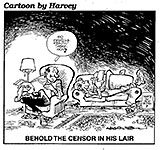
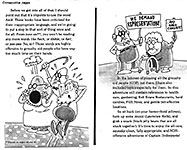
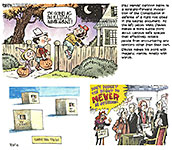
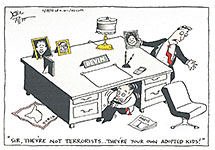
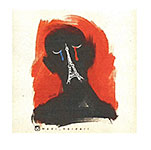
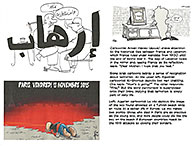
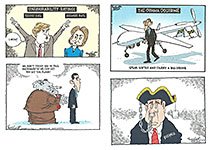
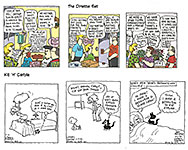
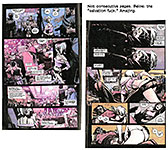
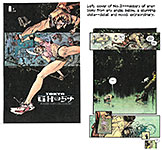

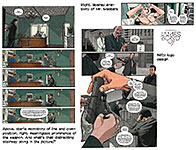
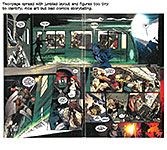
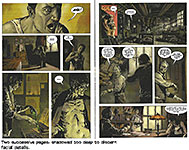

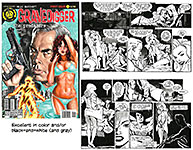
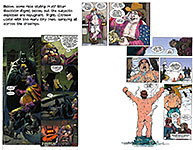
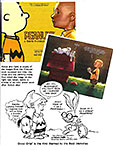

1.jpg)
2.jpg)

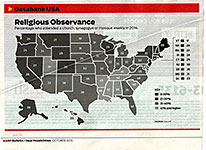
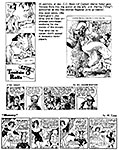
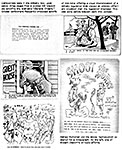
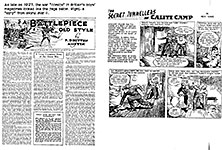
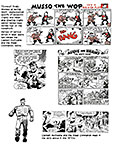

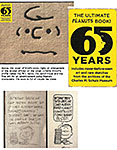
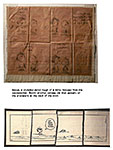
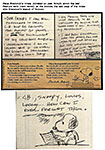
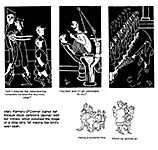
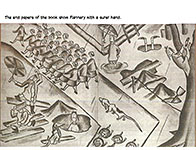
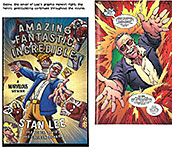
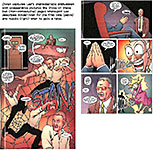
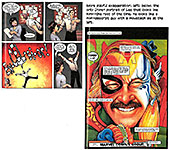
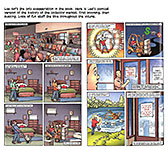
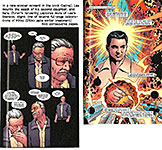
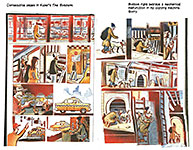
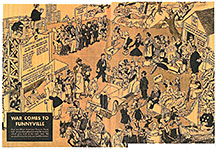
1.jpg)
2.jpg)